What’s the best way to cover 2000 kilometres in Europe with enough style, performance, and space to not get bored? There’s one one obvious answer – the Porsche Panamera Sport Turismo. It literally has the Italian word for ‘touring’ in its name and the version of the Panamera I have is the best.
The Sport Turismo is a new body style for the second-generation Panamera. More shooting brake than wagon, Porsche doesn’t refer to it as such because ‘wagon’ is a marketing-friendly term. It’s also not as dull as more wagons, maintaining that quintessentially sporty styling we’ve come to know and love from Stuttgart’s finest. During my time in Italy earlier this summer, I was able to put the Panamera Sport Turismo through an extensive 10-day test through some of the most beautiful parts of Italy.
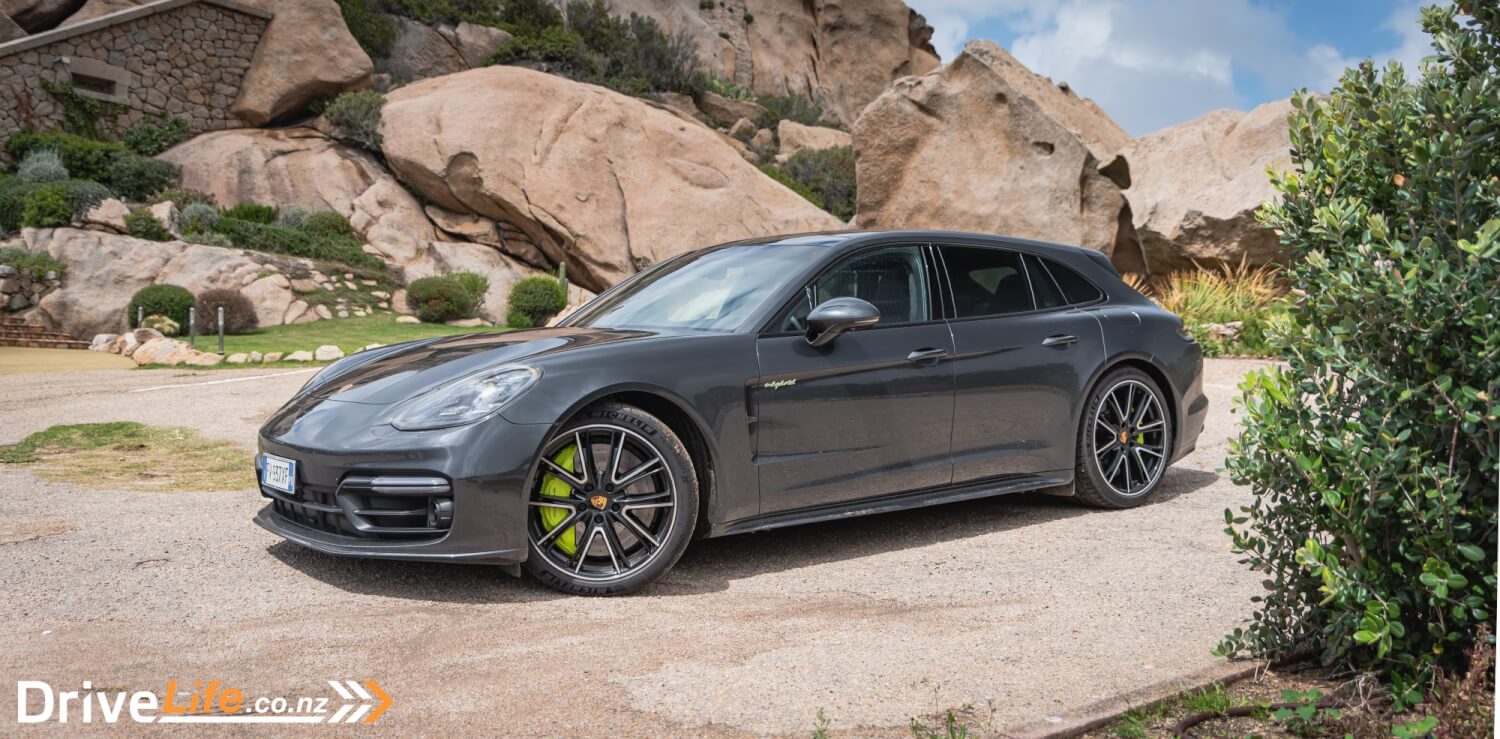
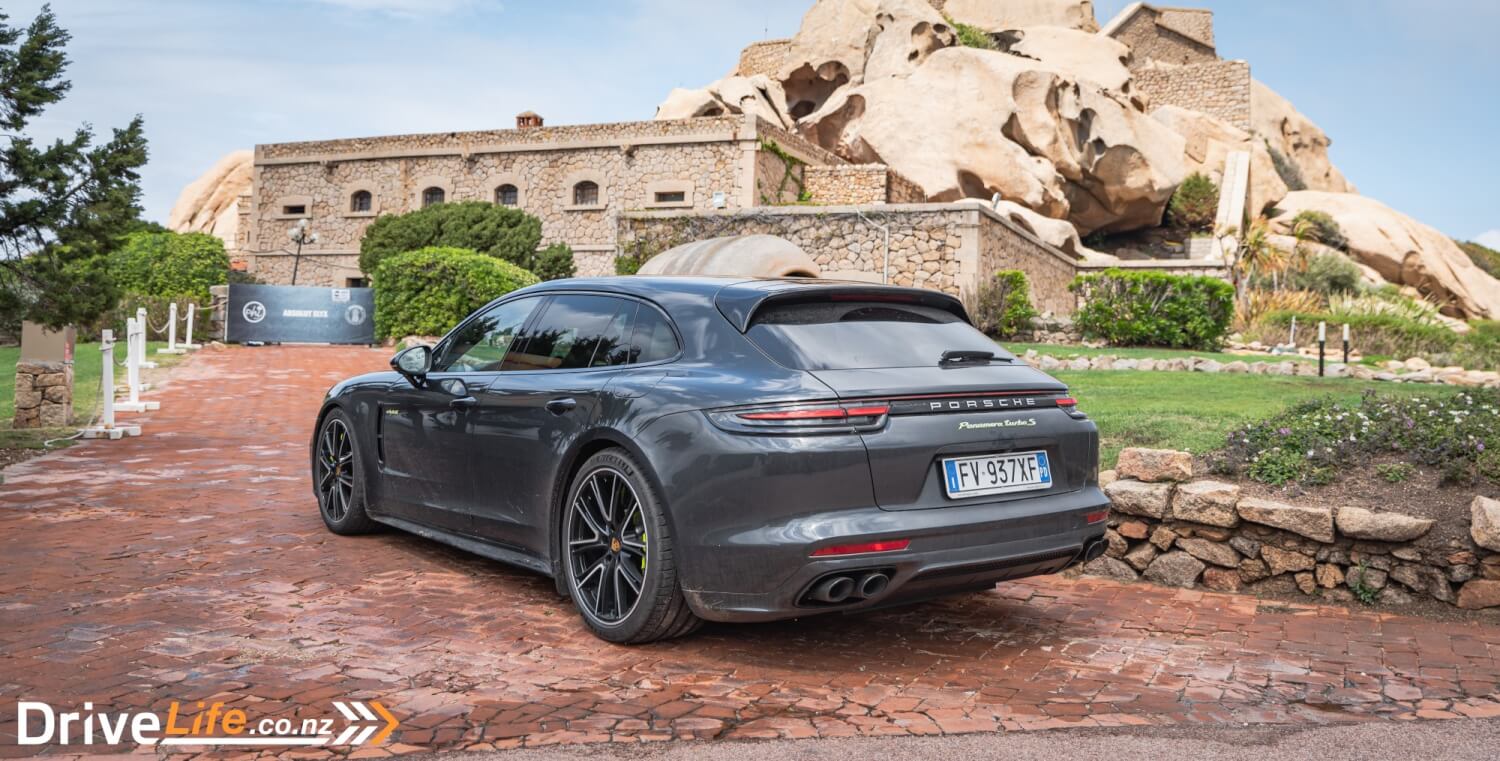
2019 Porsche Panamera Sport Turismo Turbo S e-Hybrid
Like its conventional four-door counterpart, the Sport Turismo comes with a range or V6 and V8 engines. There’s no diesel for this generation, Porsche are wanting to distance itself from that dirty business and focus more on petrol power and electrification.
As with any Porsche model, the range is quite a confusing mix of random letters. The base car comes with a 3.0-litre turbocharged V6 with 243kW, the Panamera 4S with a 2.9-litre turbocharged V6 with 324kW, the Panamera GTS with a 338kW 2.9-litre turbocharged V6, a Panamera Turbo with a 4.0-litre twin-turbo V8 producing 404kW.
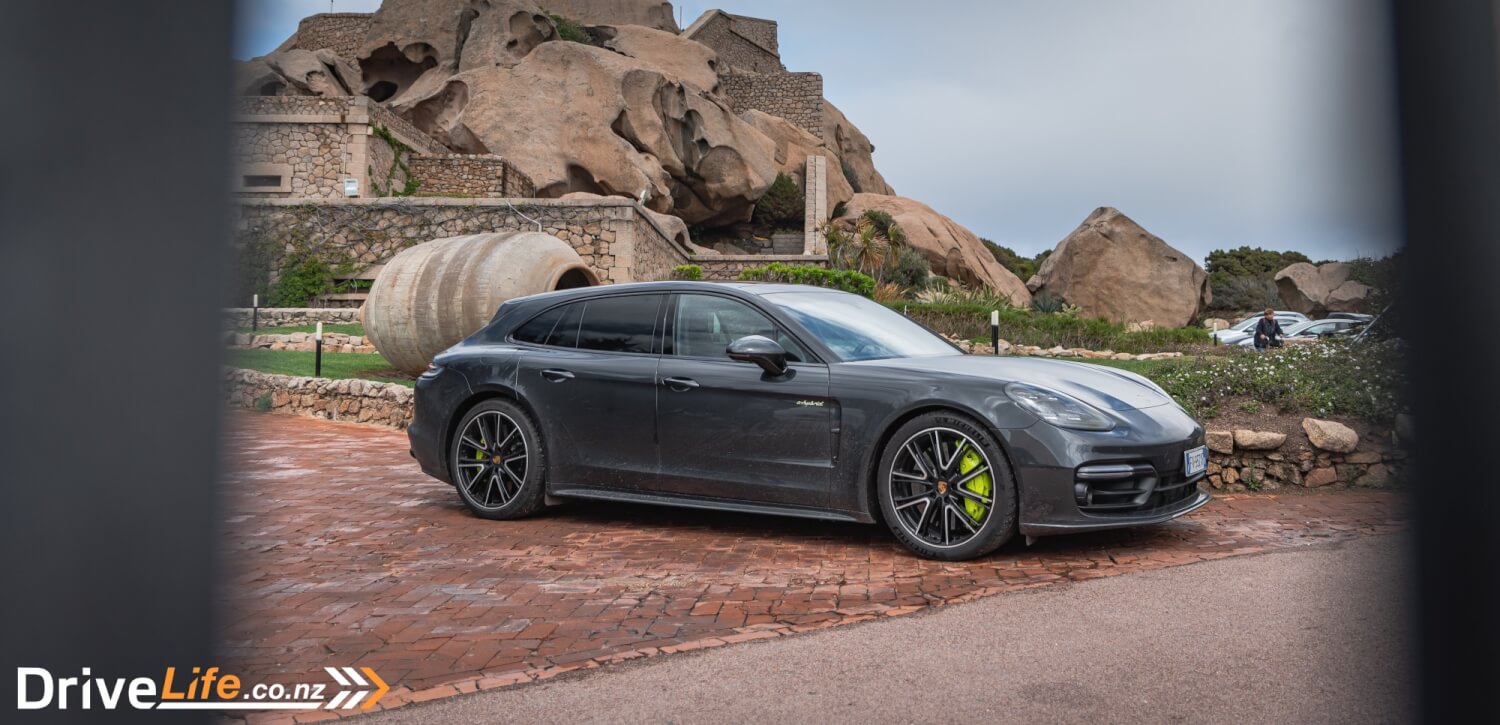
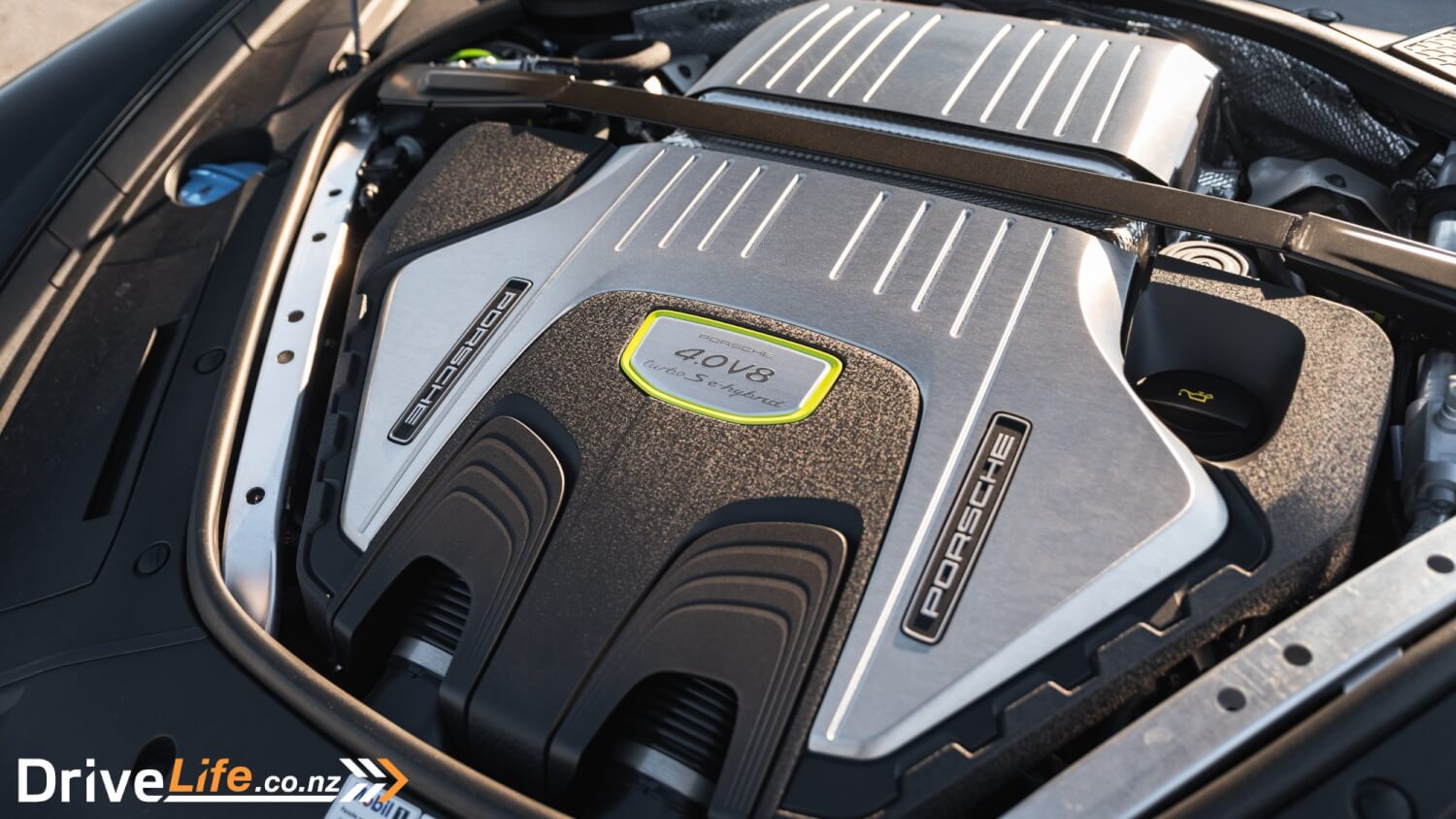
Porsche have two e-Hybrid versions of the Panamera. The base Panamera 4 e-Hybrid utilises a 3.0-litre V6 from the base car with an electric motor for a combined 340kW. Finally, the range-topper and the one I’m testing is the Panamera Turbo S e-Hybrid. Got that? It’s quite a mouthful but it’s got the same 4.0-litre twin-turbo V8 from the Turbo but with an additional electric motor giving the Turbo S a very adequate 500kW.
Prices for the Panamera 4 Sport Turismo start from $225,400 and go all the way up to $435,500 for the range-topping Turbo S e-Hybrid. That’s also before ticking any of the many boxes on Porsche’s options list.
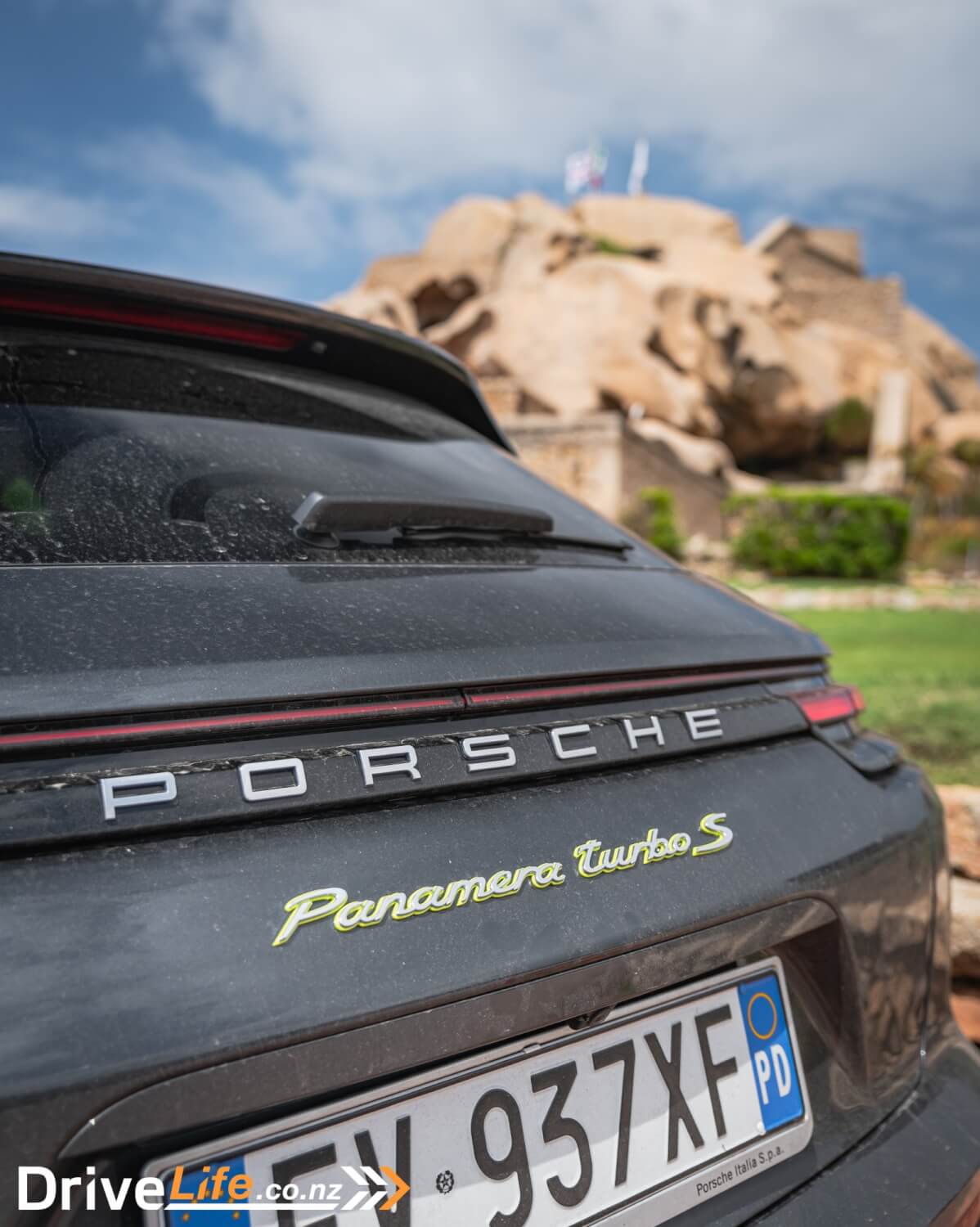
First Impressions Of The 2019 Porsche Panamera Sport Turismo Turbo S e-Hybrid
It’s a big, imposing car. This thing has a presence. It’s quite large, stretching at over 5 metres long and close to two metres wide. It’s a lot easier on the eye than the previous generation Panamera for sure, but I’d go as far as to say it’s better still than the new four-door Panamera. It doesn’t have the Panamera Turbo’s crazy extending Transformers style active rear wing but it does have a shooting brake style shape, which is infinitely cooler.
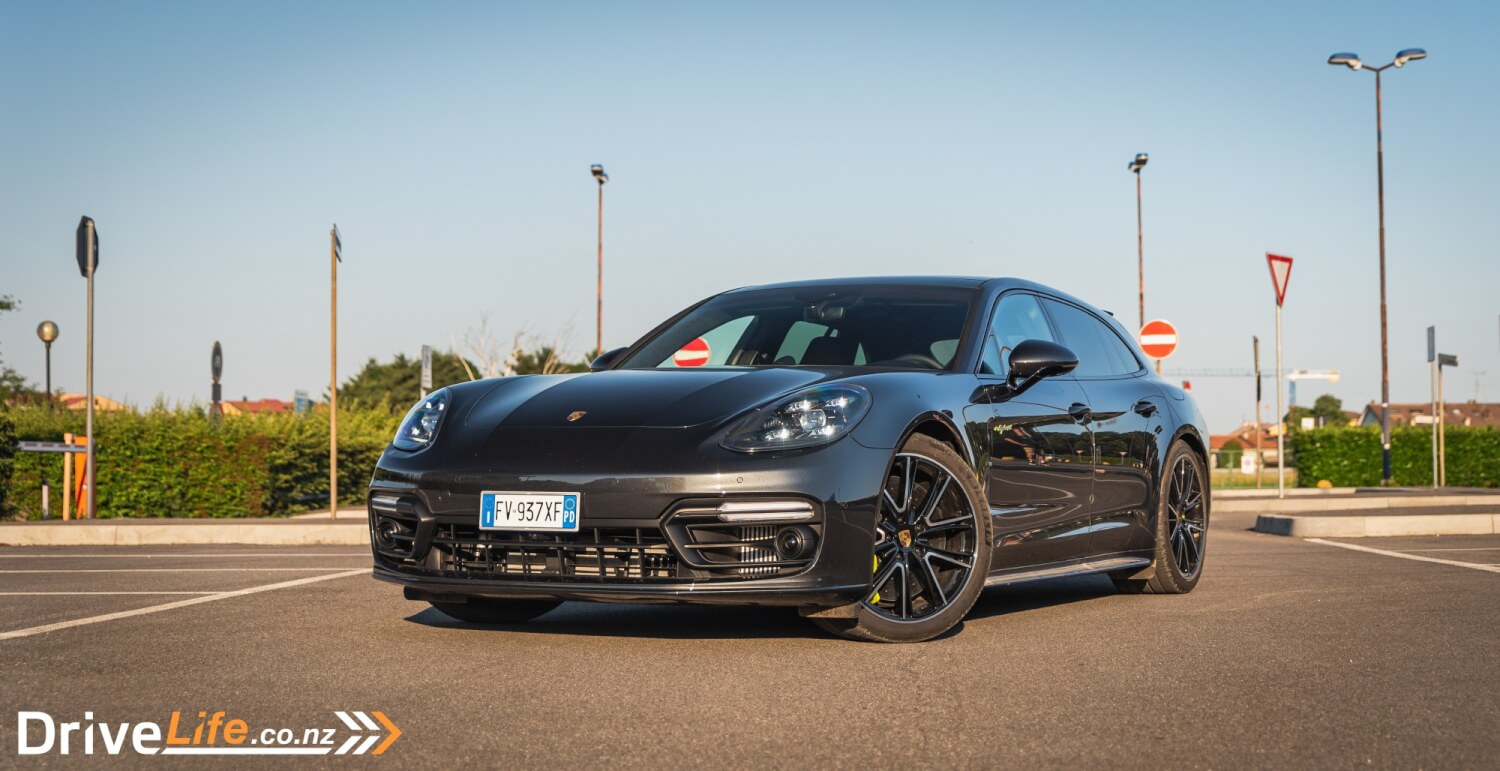
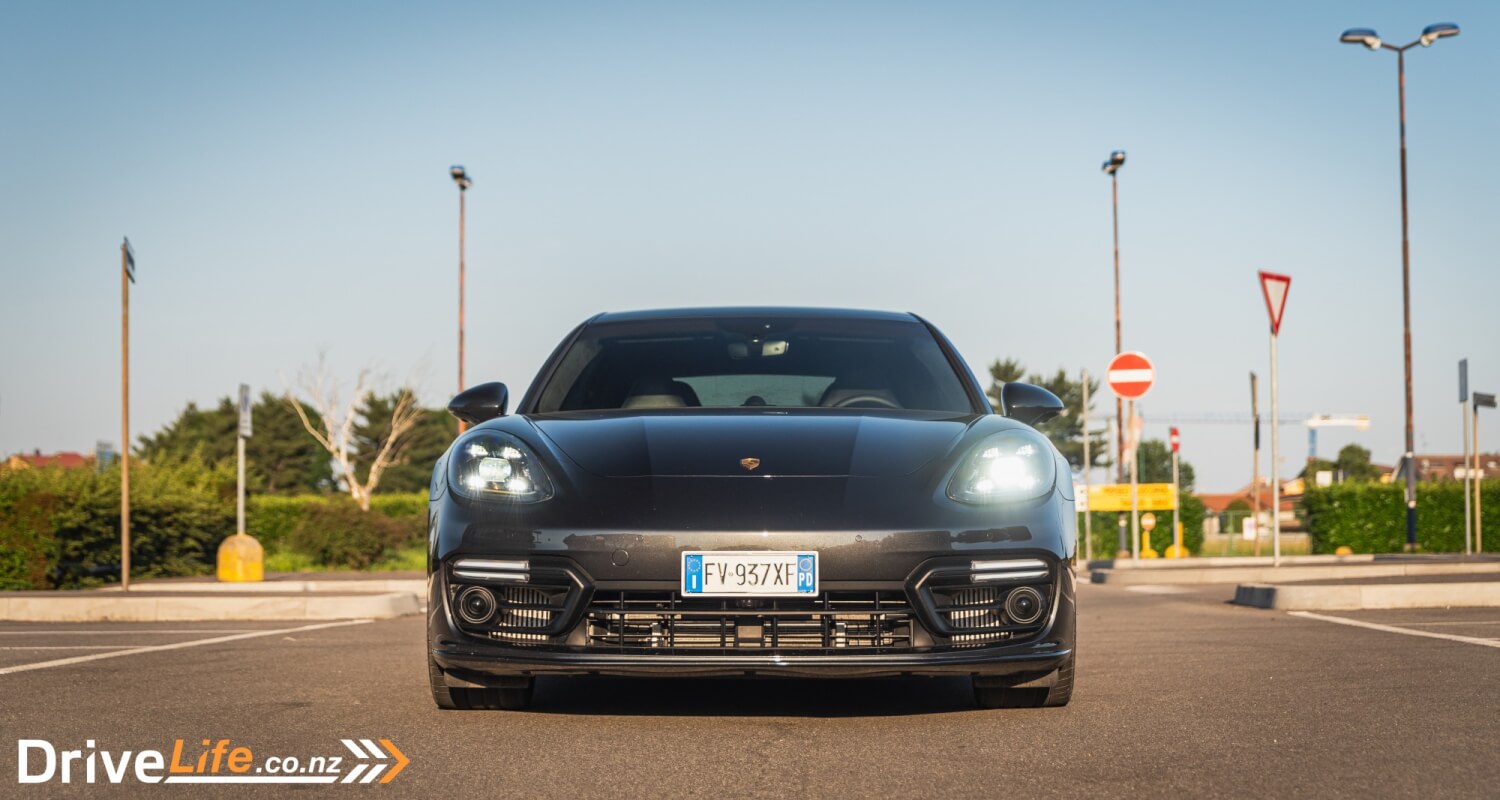
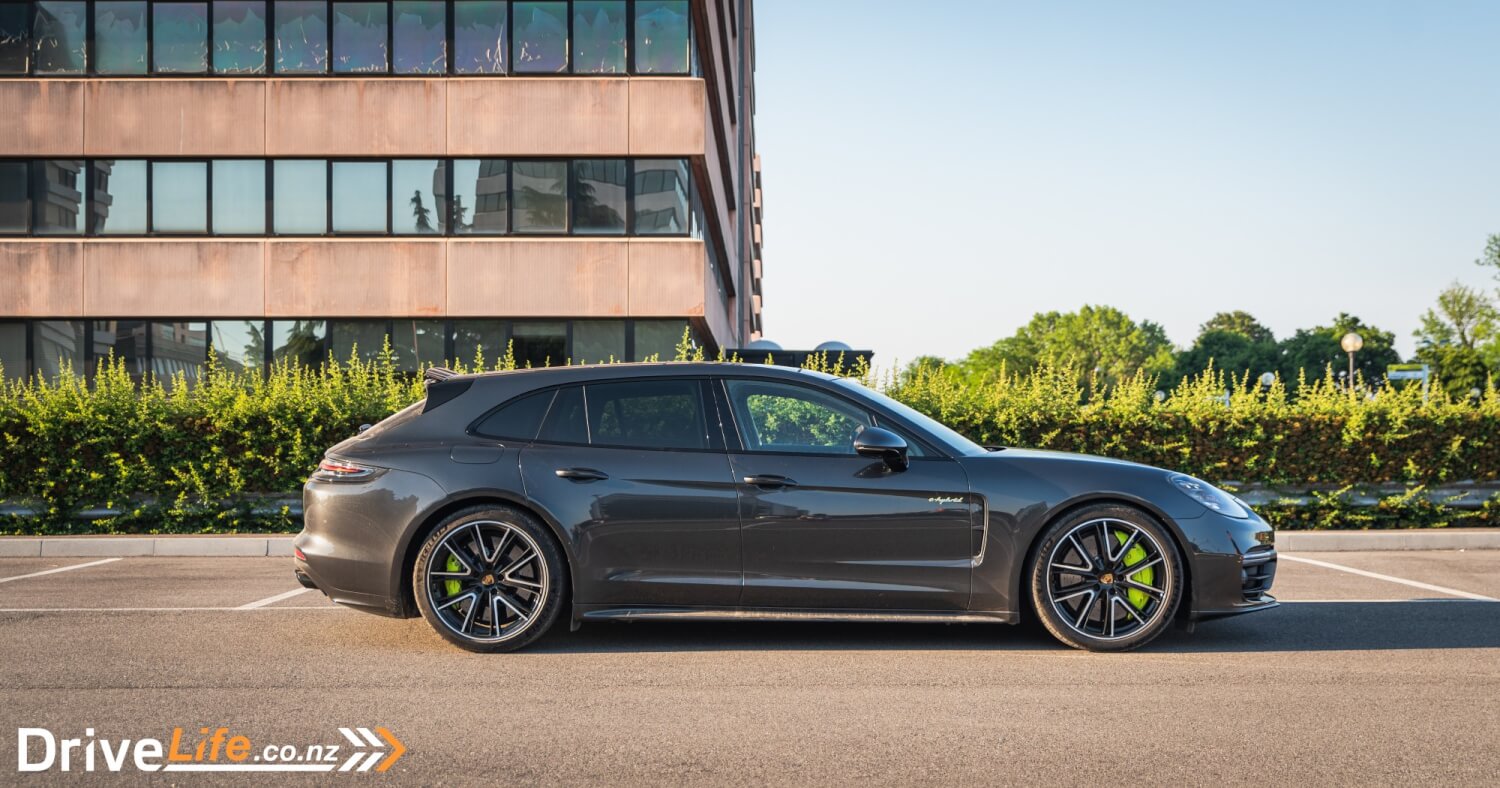
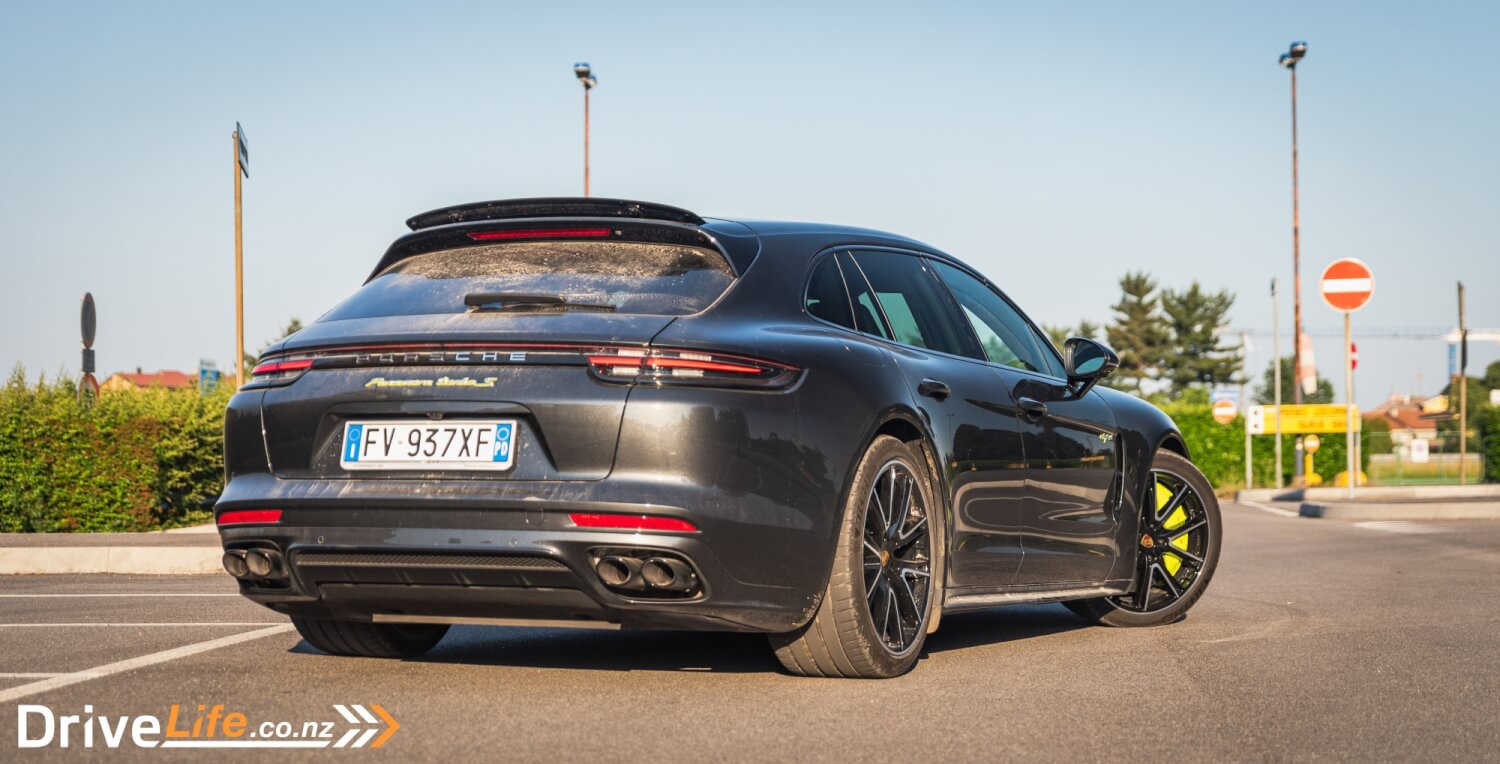
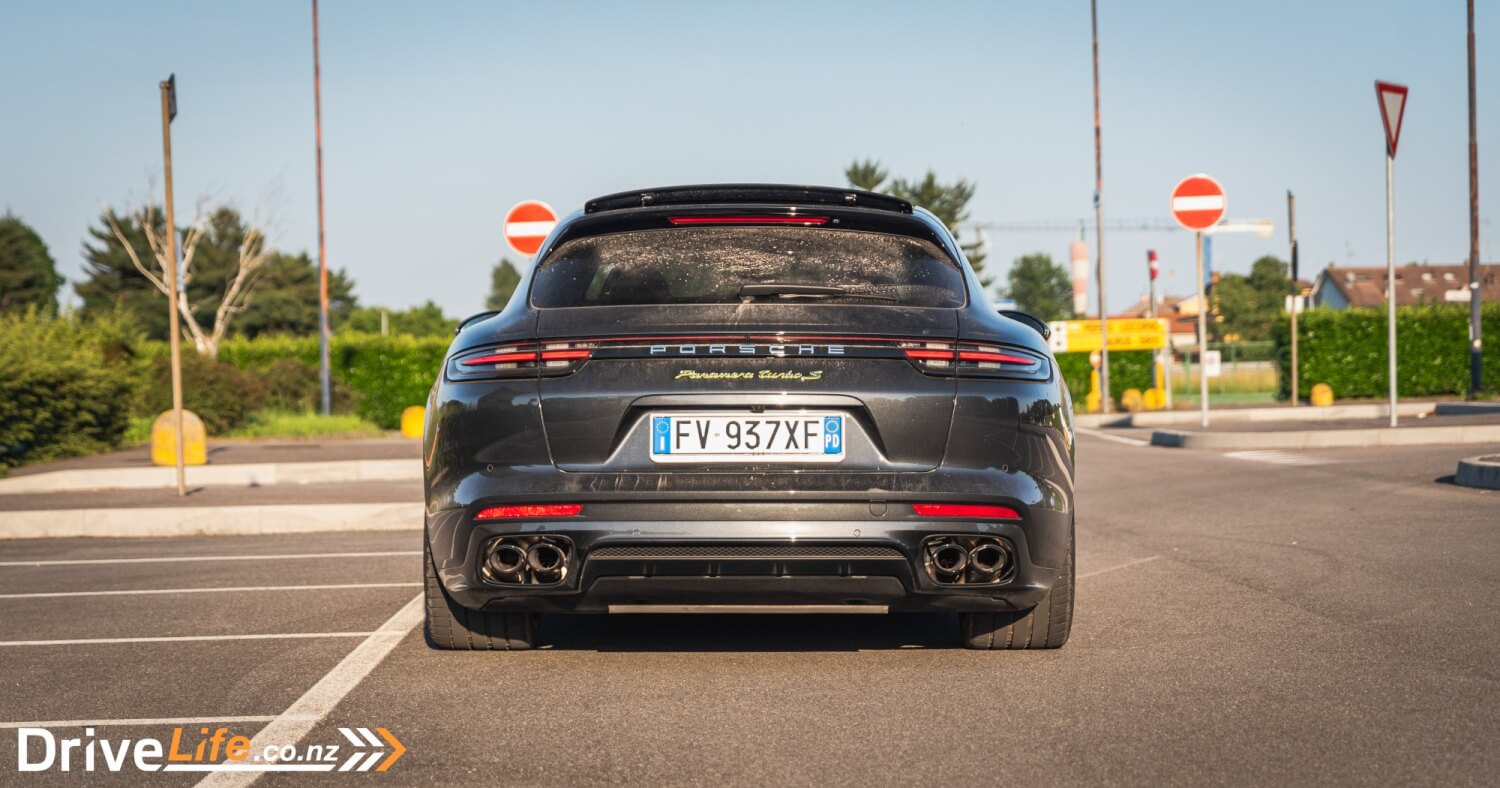
As it’s a hybrid it comes with many Acid Green bits to remind you and everyone else that you’re saving the world in your 500kW Porsche. The carbon-ceramic brakes have Acid Green callipers, there’s more Acid Green trim on the e-Hybrid badges on the front doors, and more on the model badging at the rear. My test car also came equipped with the Sport Design package which adds sportier bumpers, skirts, and wheels.
What’s The Inside Like On A 2019 Porsche Panamera Sport Turismo Turbo S e-Hybrid?
No one does premium interiors quite like Porsche. There’s an unmistakable look and feel to the interior of the Panamera. If you’ve been in any of Porsche’s modern sports cars, the interior of the Panamera will feel familiar and sporty, yet posh enough to compete with some of the most luxurious sedans and with all the modern gizmos to make Silicon Valley execs drool.
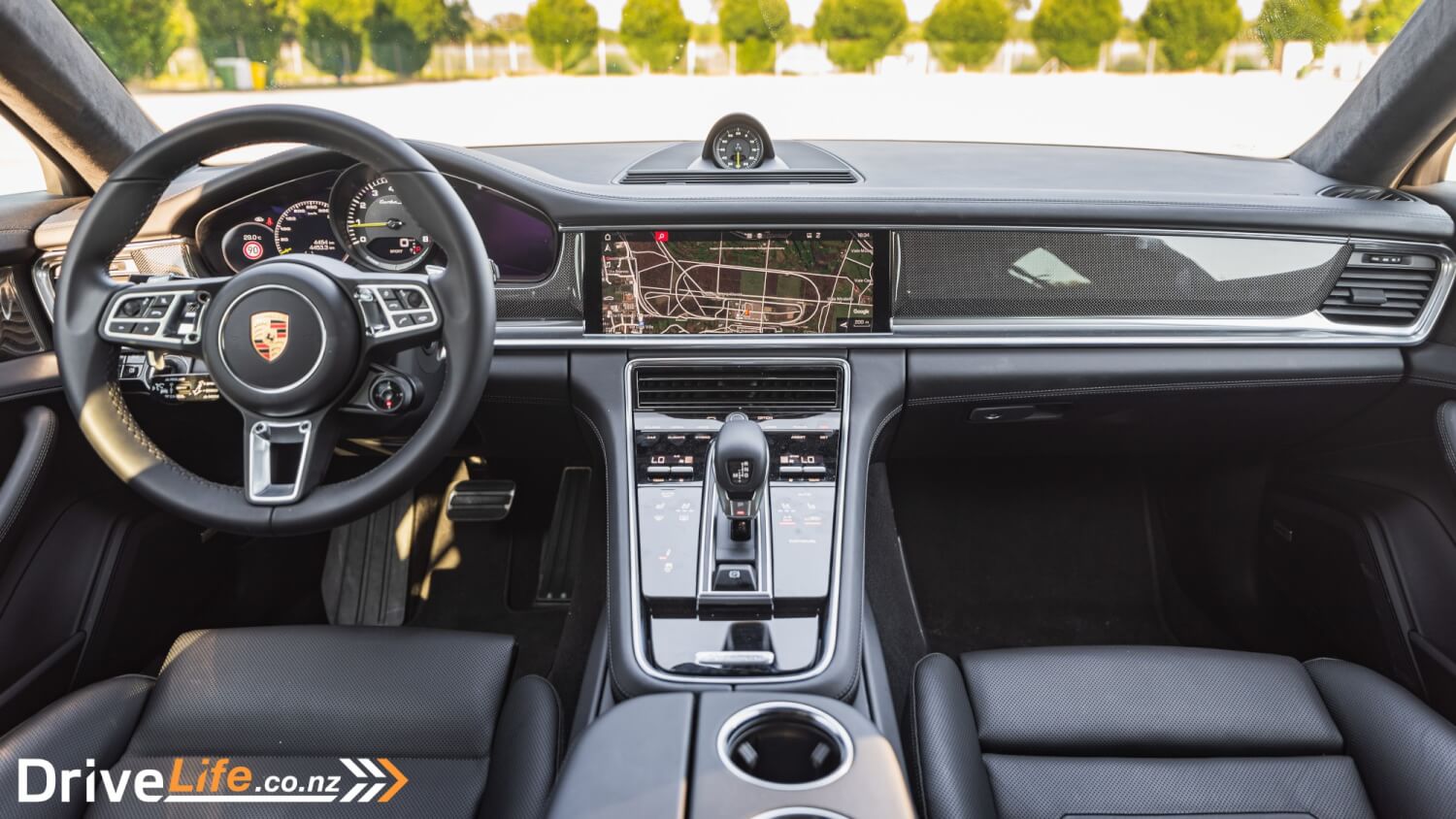
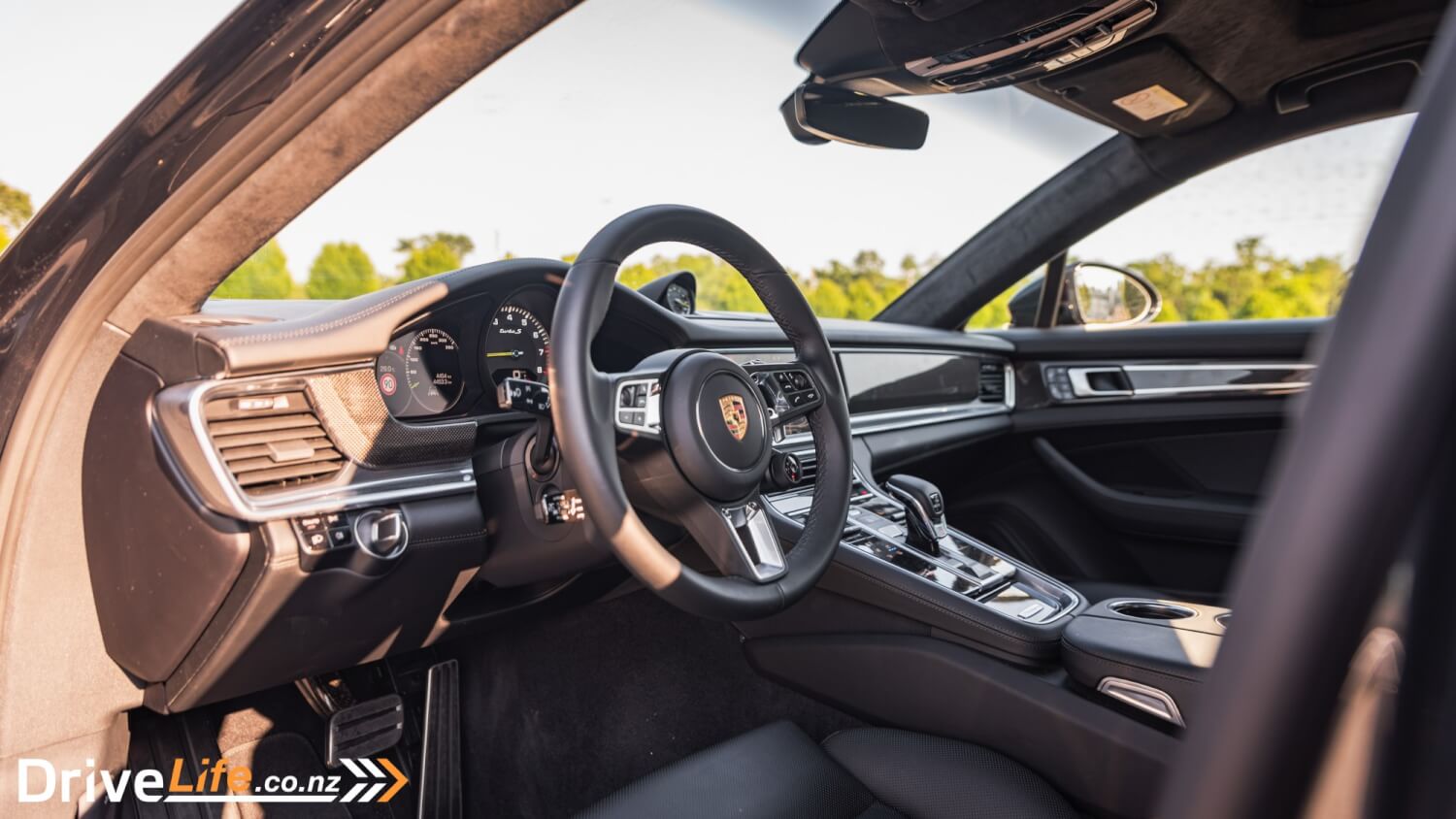

It’s a proper tech tour-de-force inside with two fantastically crisp digital displays on either side of the central analogue speedo making up the gauge cluster, a large heads-up display unit above that, and a massive 12.3-inch central display screen that controls literally everything. Most of the time it works as a touch screen but should you find that a bit fiddly, there’s a rotary dial that helps you jump through menus too.
When I say the central screen controls everything, I mean everything. This is where you go to change the car’s driving modes, to raise and lower the rear spoiler, raise and lower the lift, set navigation destinations, climate control, and even the bloody central air conditioning vent. That was probably the most annoying thing about an otherwise brilliant car; having to go into the central screen to adjust one vent.
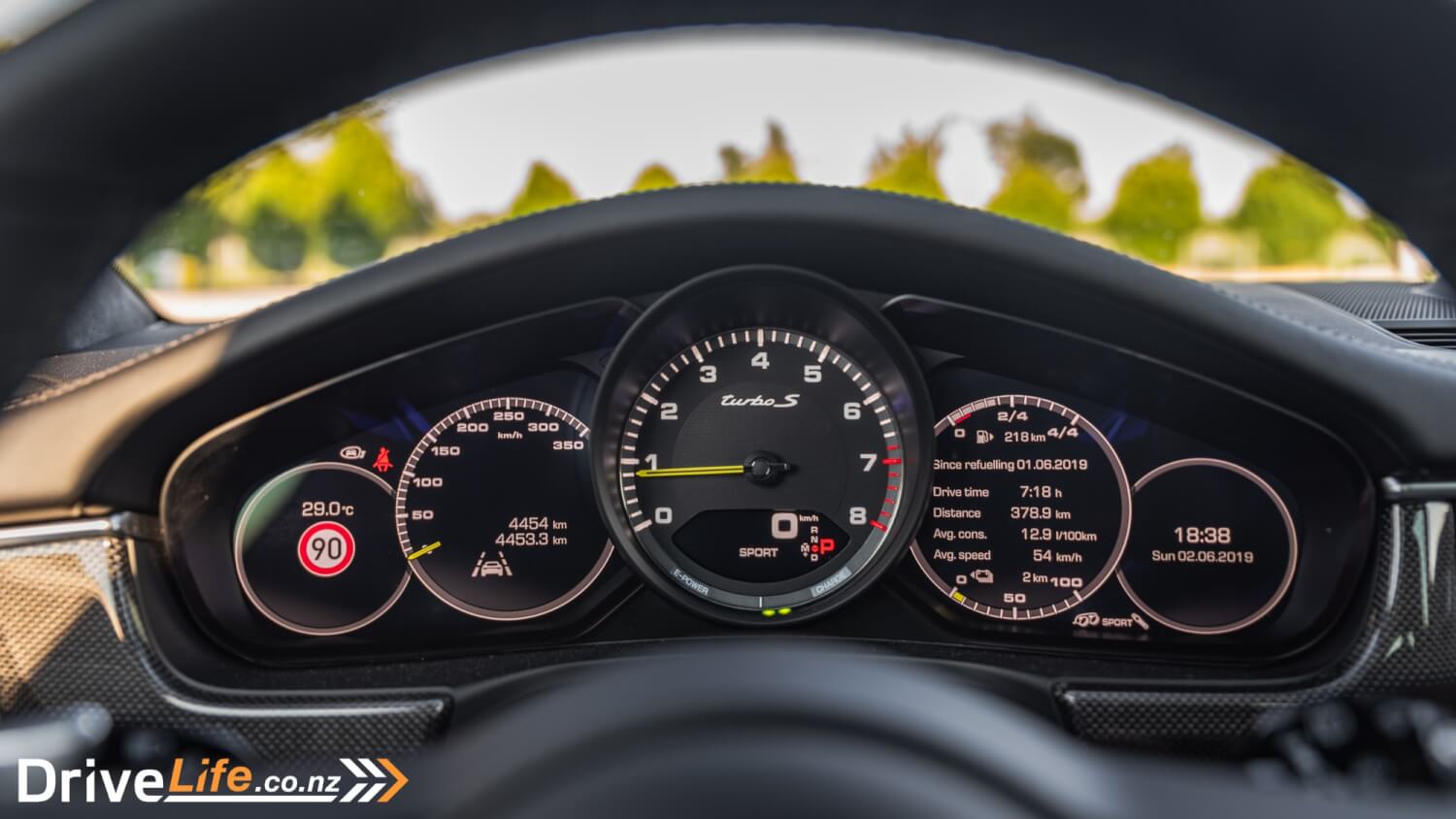
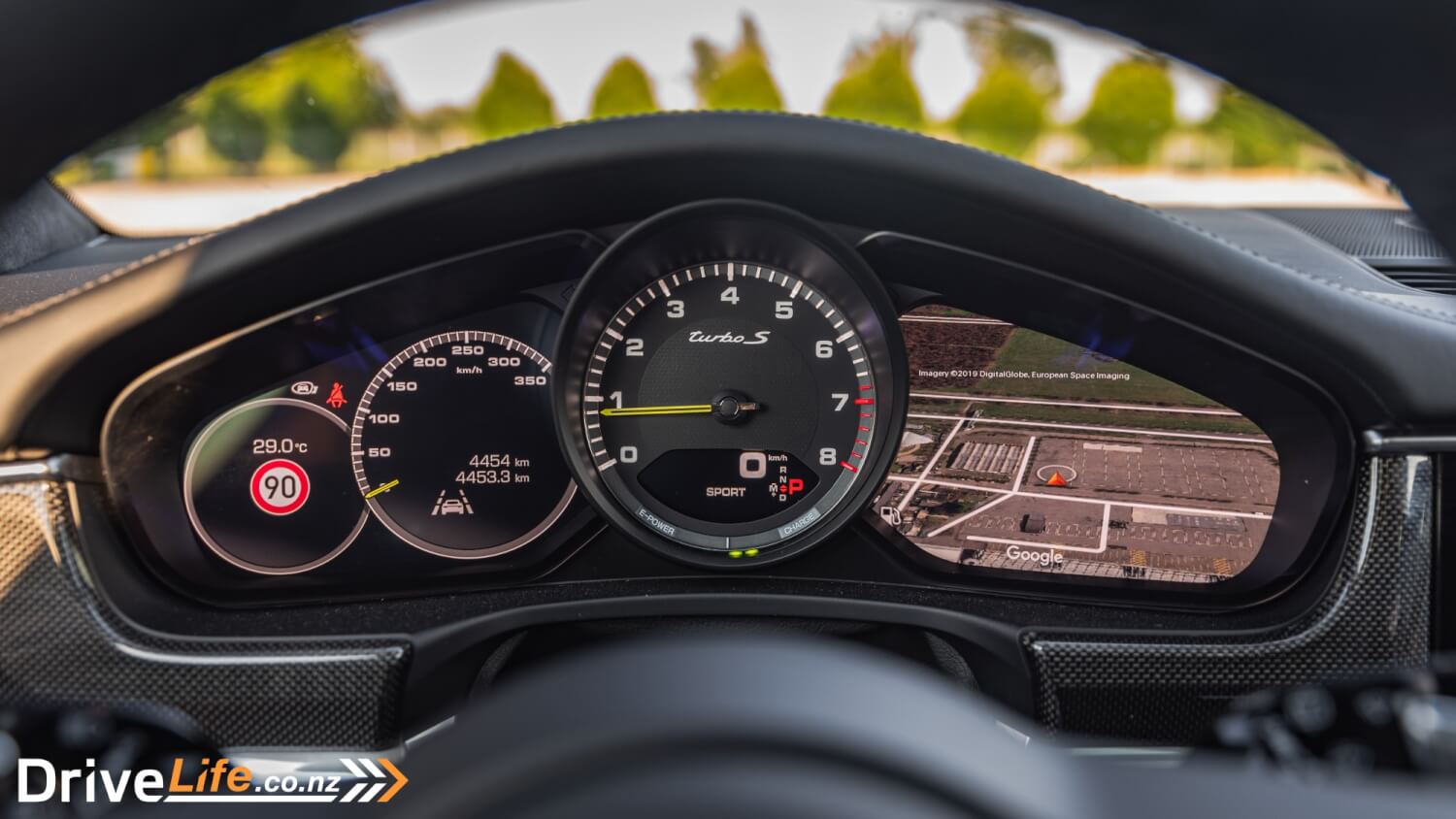
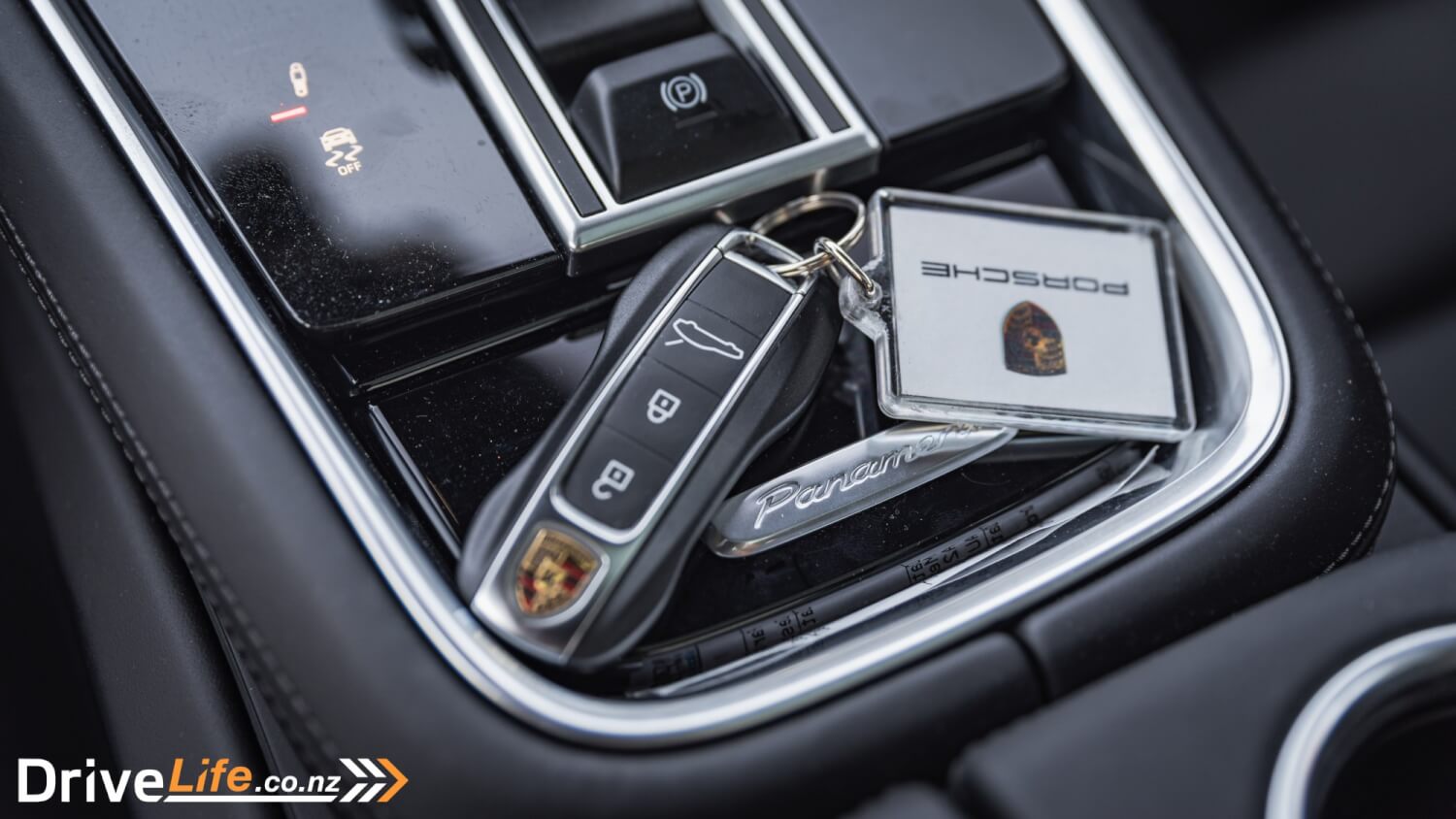
Actually, no I lie. The most annoying thing about the Panamera were all the piano black surfaces which attracted dust and fingerprints. If anyone ever commits a crime in a Panamera, it’ll be easy to find their fingerprints because literally every surface on the centre console is a magnet for dust and prints. If you like things perfect and clean, you’ll probably only last about 10 seconds in this car. That said, the haptic touch buttons were neat and would only light up when needed.
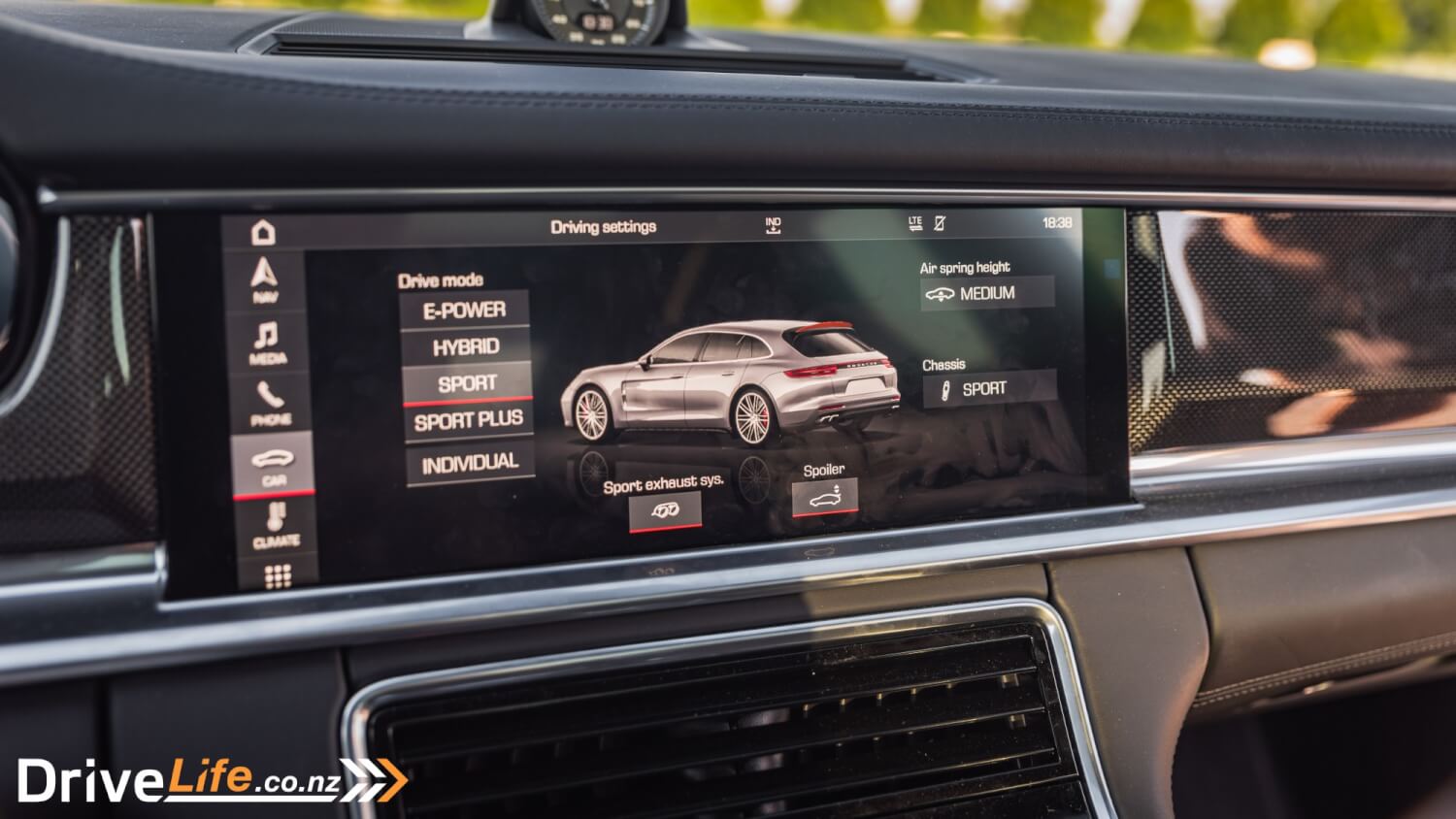
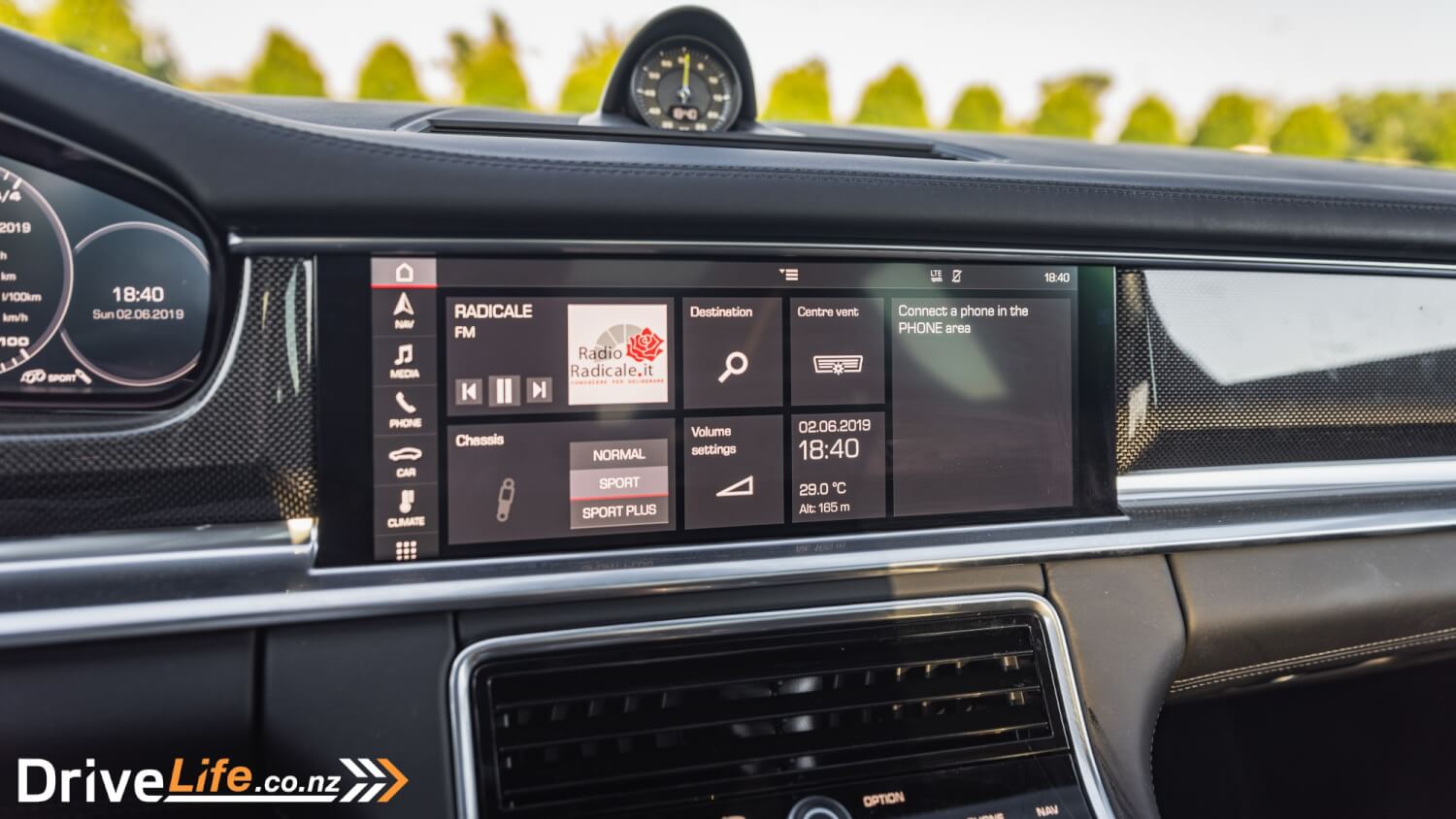
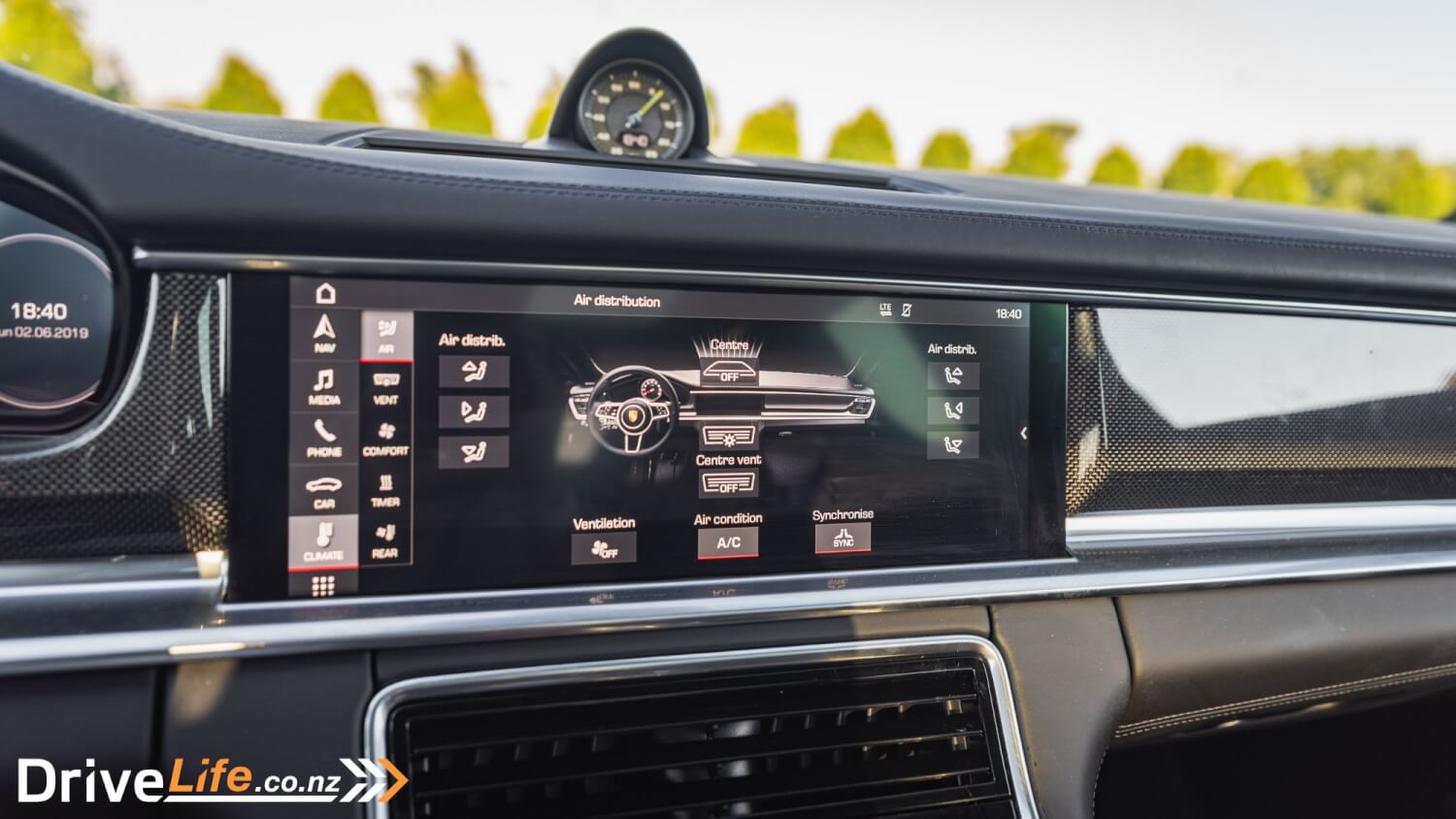
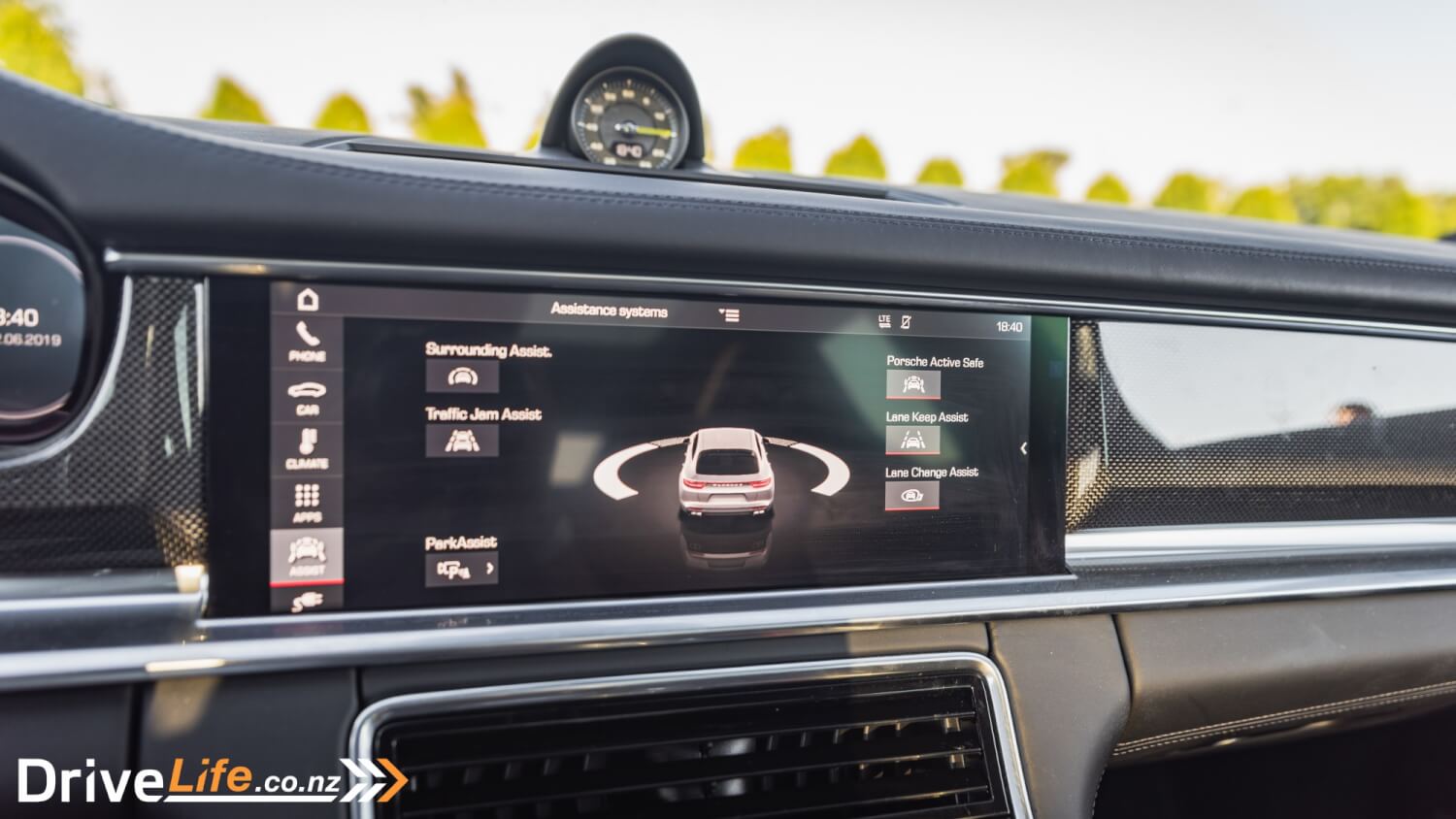
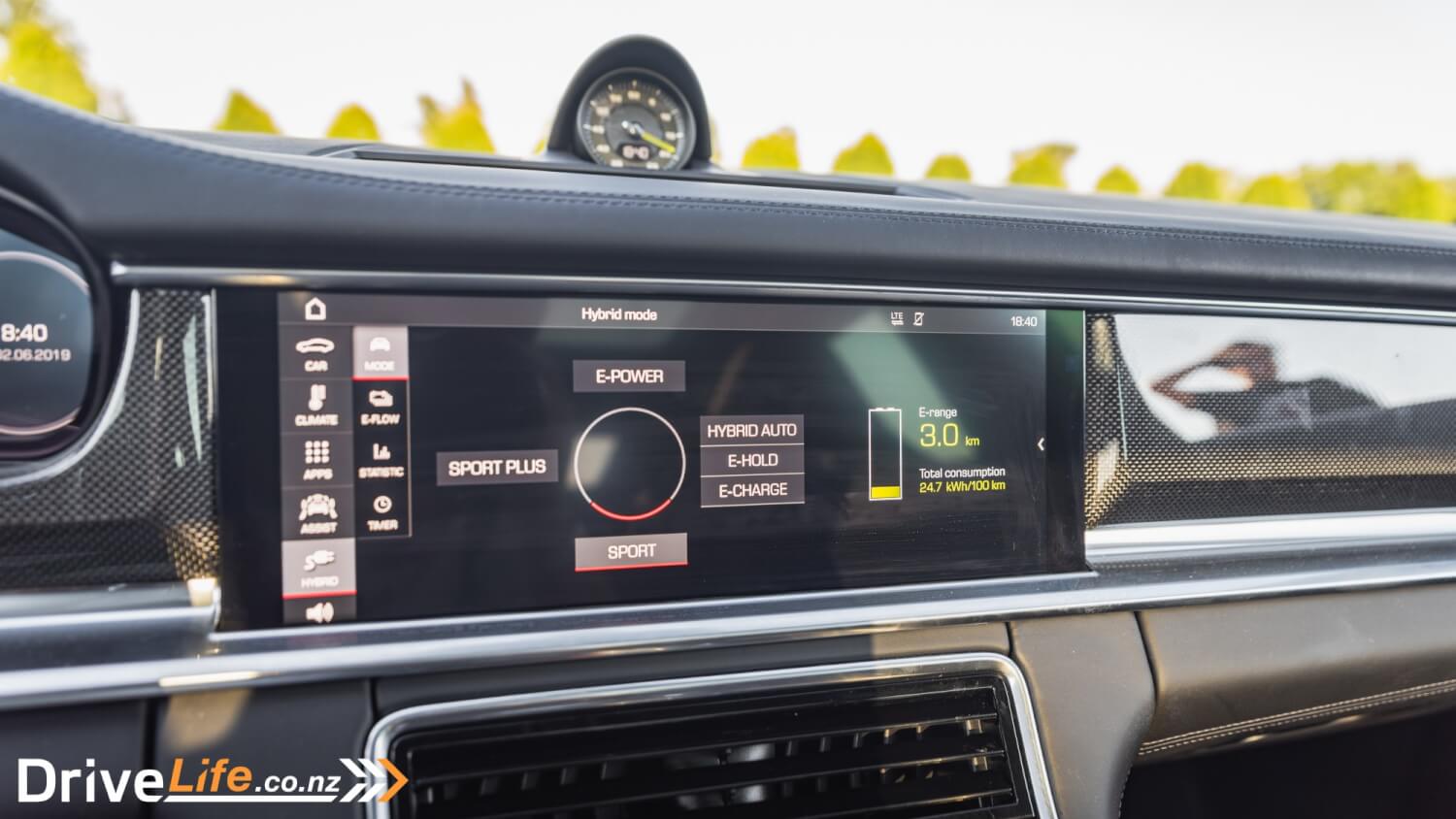
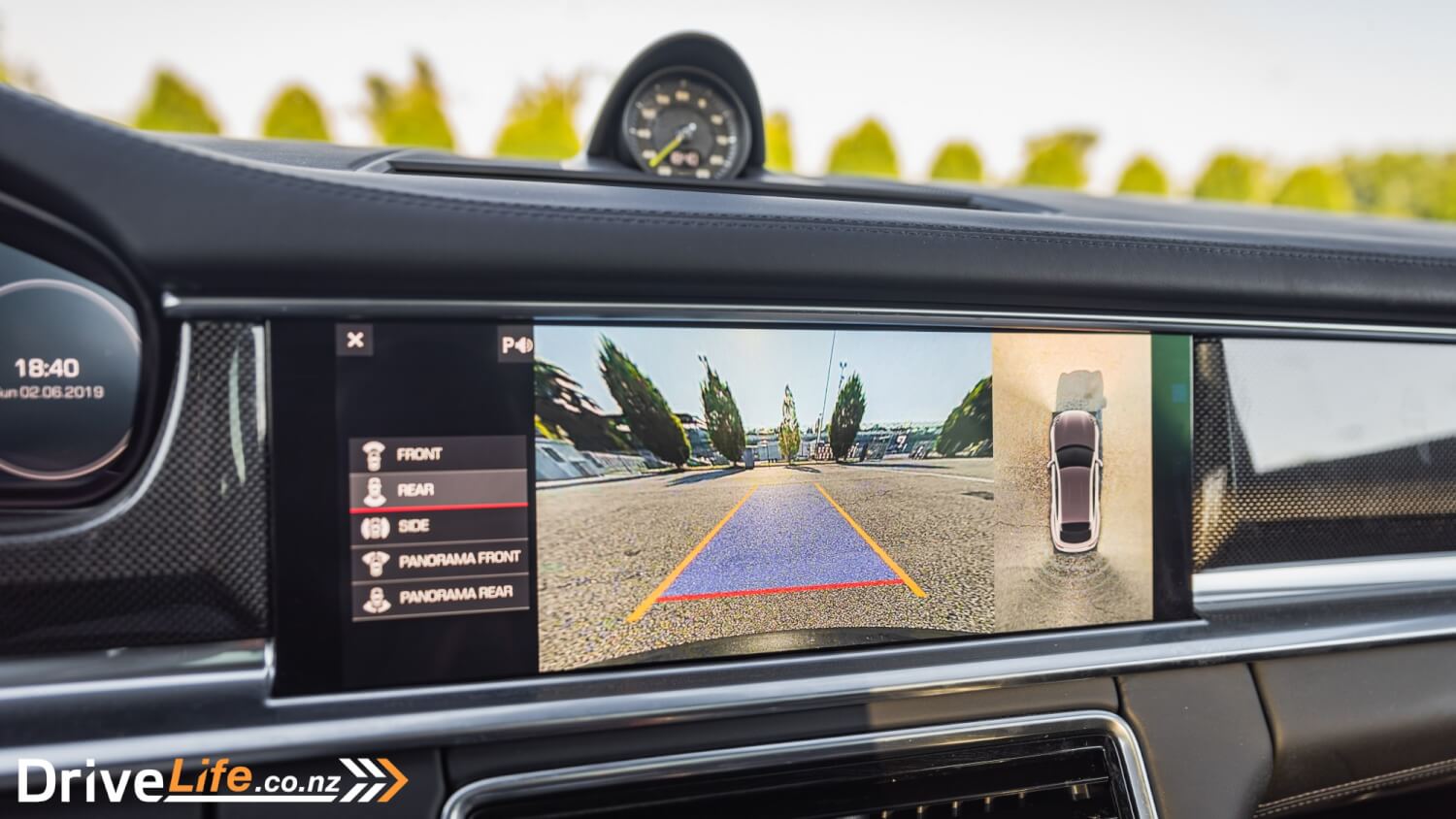
The infotainment is brilliant. It’s Porsche’s own, though the sat-nav is basically Google Maps. That’s not necessarily a bad thing since that’s pretty much better than any other OEM navigation system. Porsche’s infotainment is intuitive and the screen is nice and crisp. There’s no lag going through different menus either. But if you’re an iPhone user you probably don’t need to get too accustomed to it as the Panamera comes with Apple CarPlay. Annoyingly, it doesn’t take up the whole 16×9 screen ratio, instead it only takes up about two-thirds of the screen real estate leaving space on the right for some handy shortcut menus such as a shortcut to raise and lower the spoiler and to put it into Sport+ mode. You know, the important stuff.
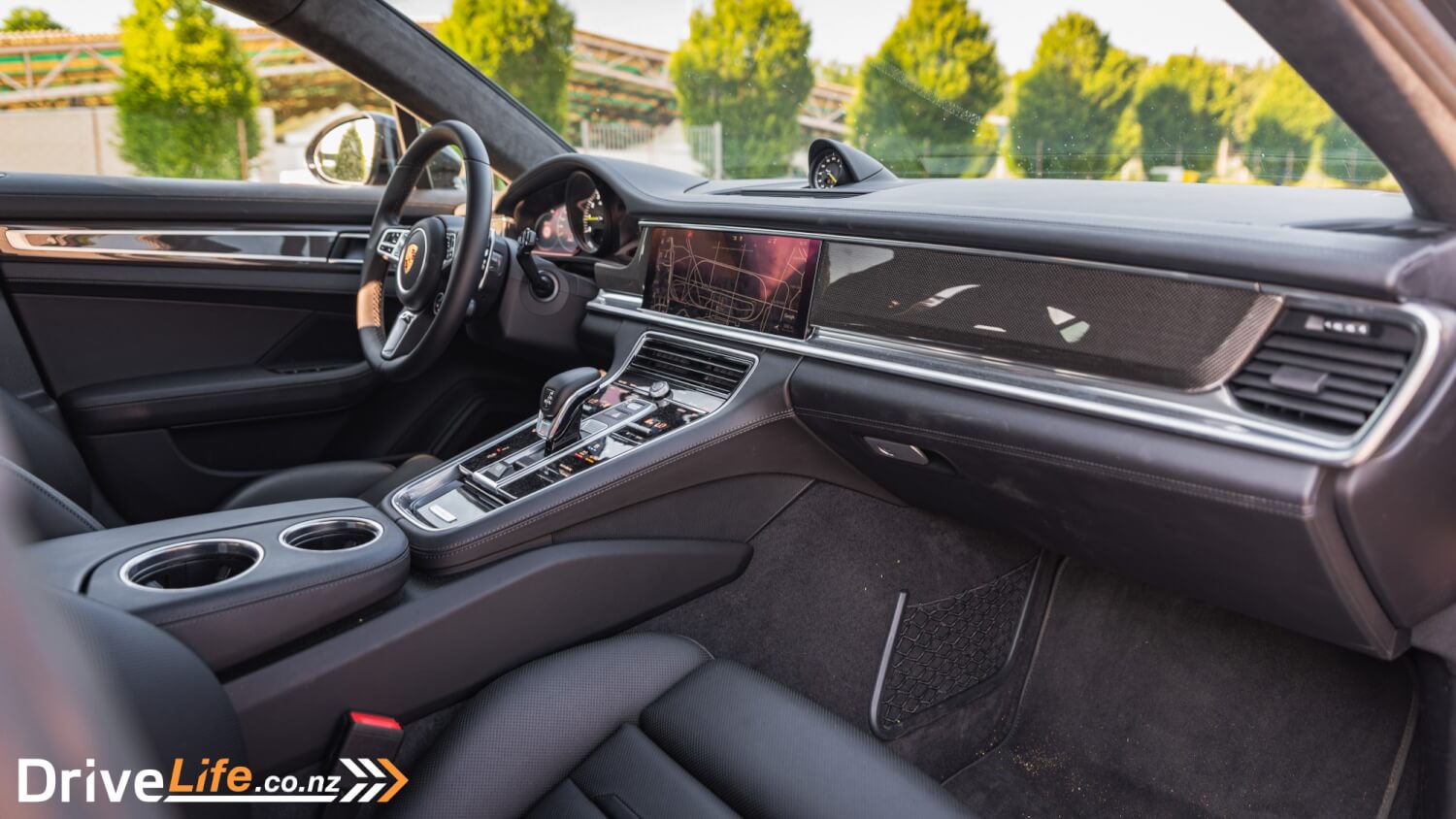

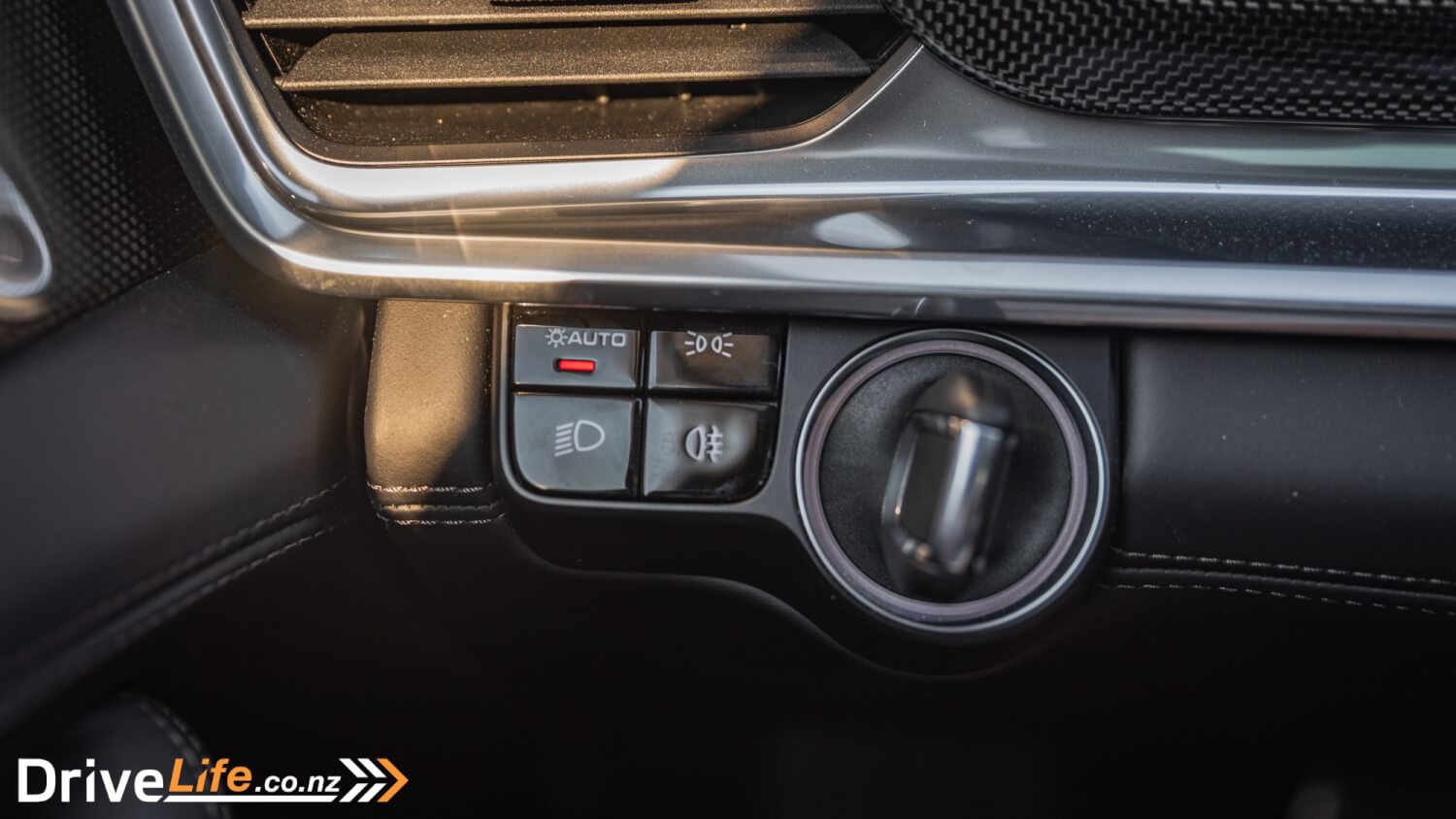
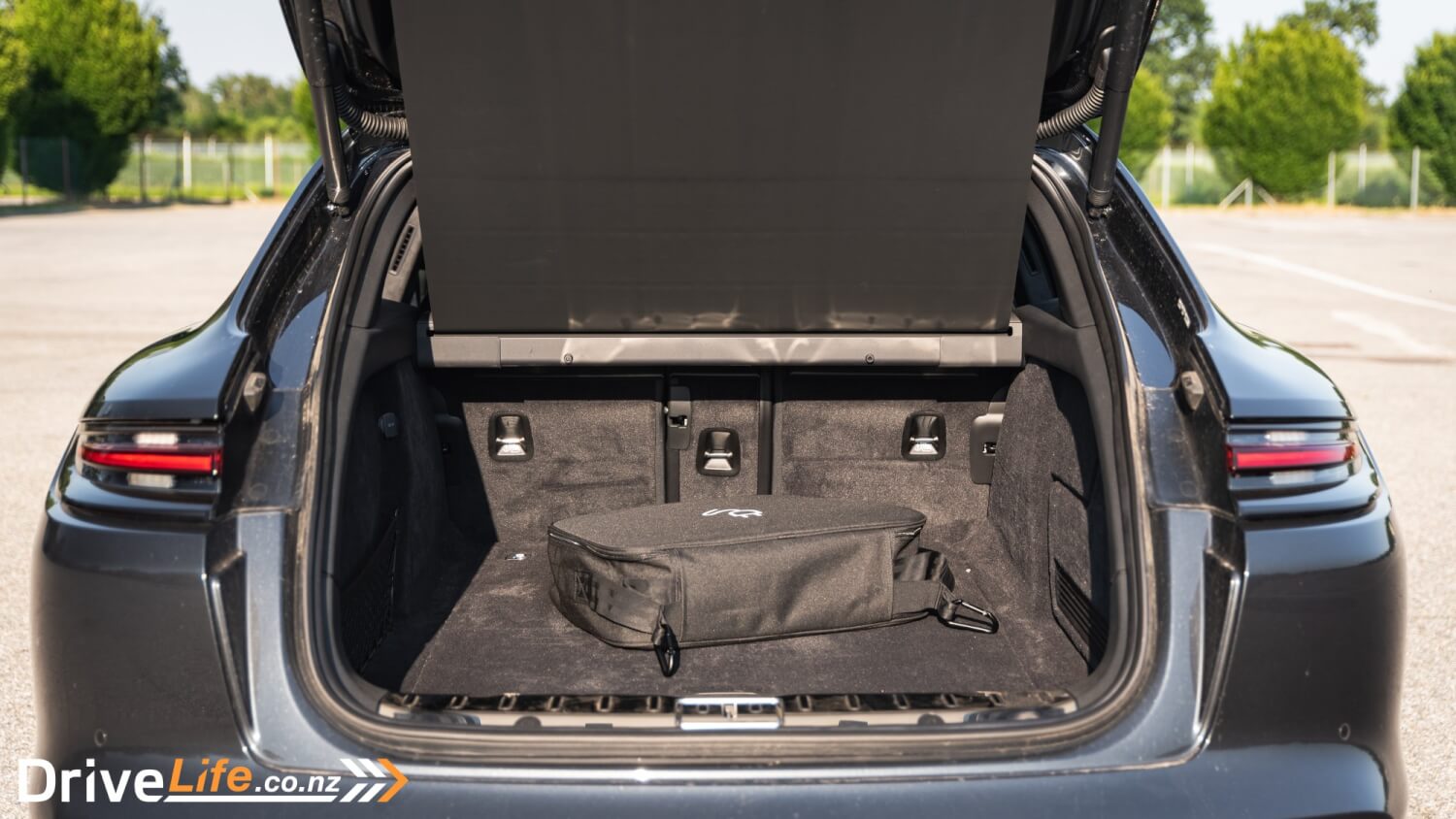
As this is technically a wagon, though Porsche doesn’t quite call it that, we should talk about space. There’s enough. Porsche calls the Sport Turismo a 4+1 but the middle seat is pretty much there for aesthetics only. This is strictly a four-seater. The boot isn’t as spacious as that of an Audi RS6 or Mercedes-AMG E63. To add insult to injury, since this is a hybrid, the boot is actually smaller than the more affordable Turbo variant since the batteries and electric motor eat into the luggage space. Then the bag for the charge cables also takes up a bit of space in the boot as there’s nowhere else to put them. I guess that’s the price you have to pay for the more striking looks and Turbo S bragging rights.
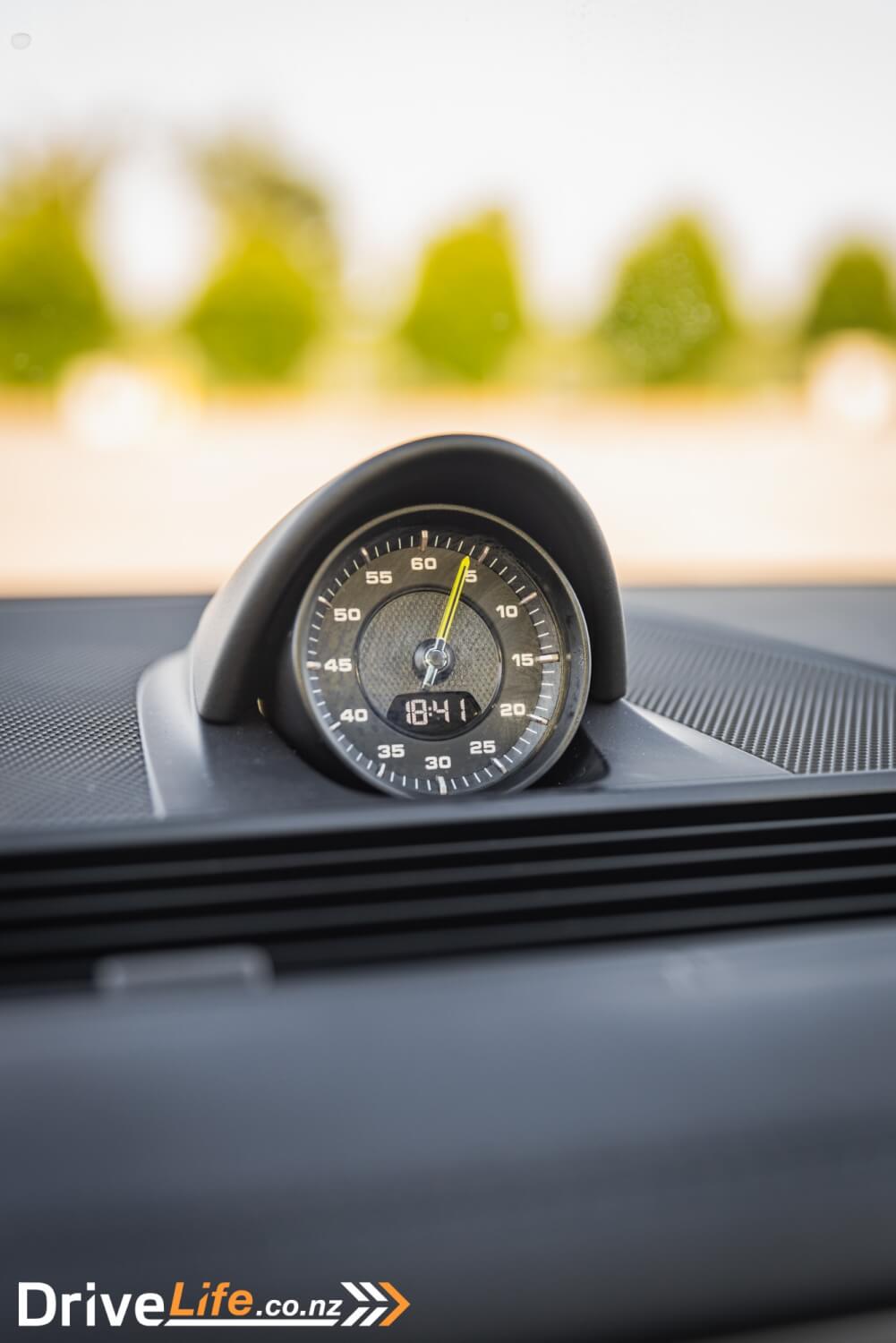
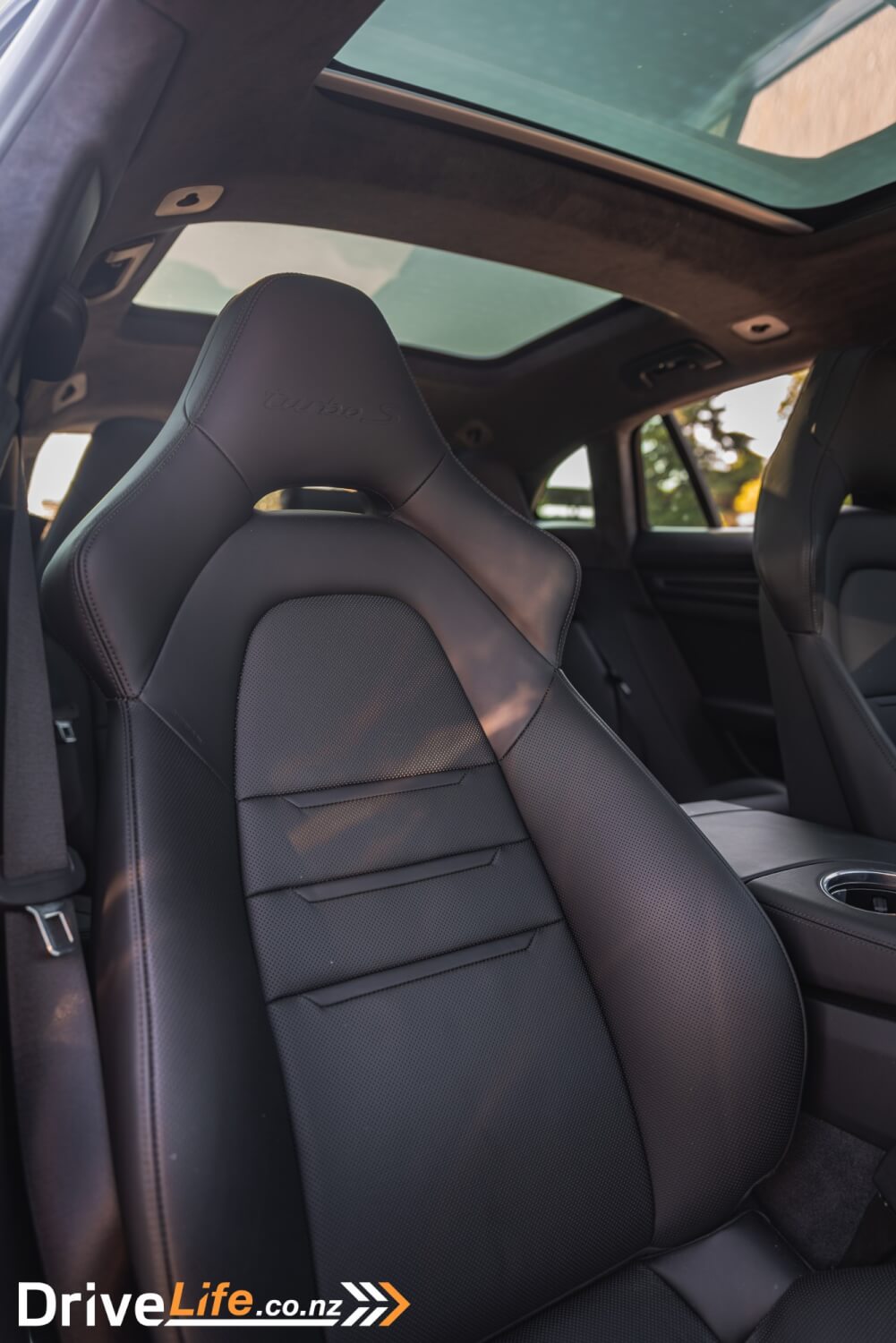
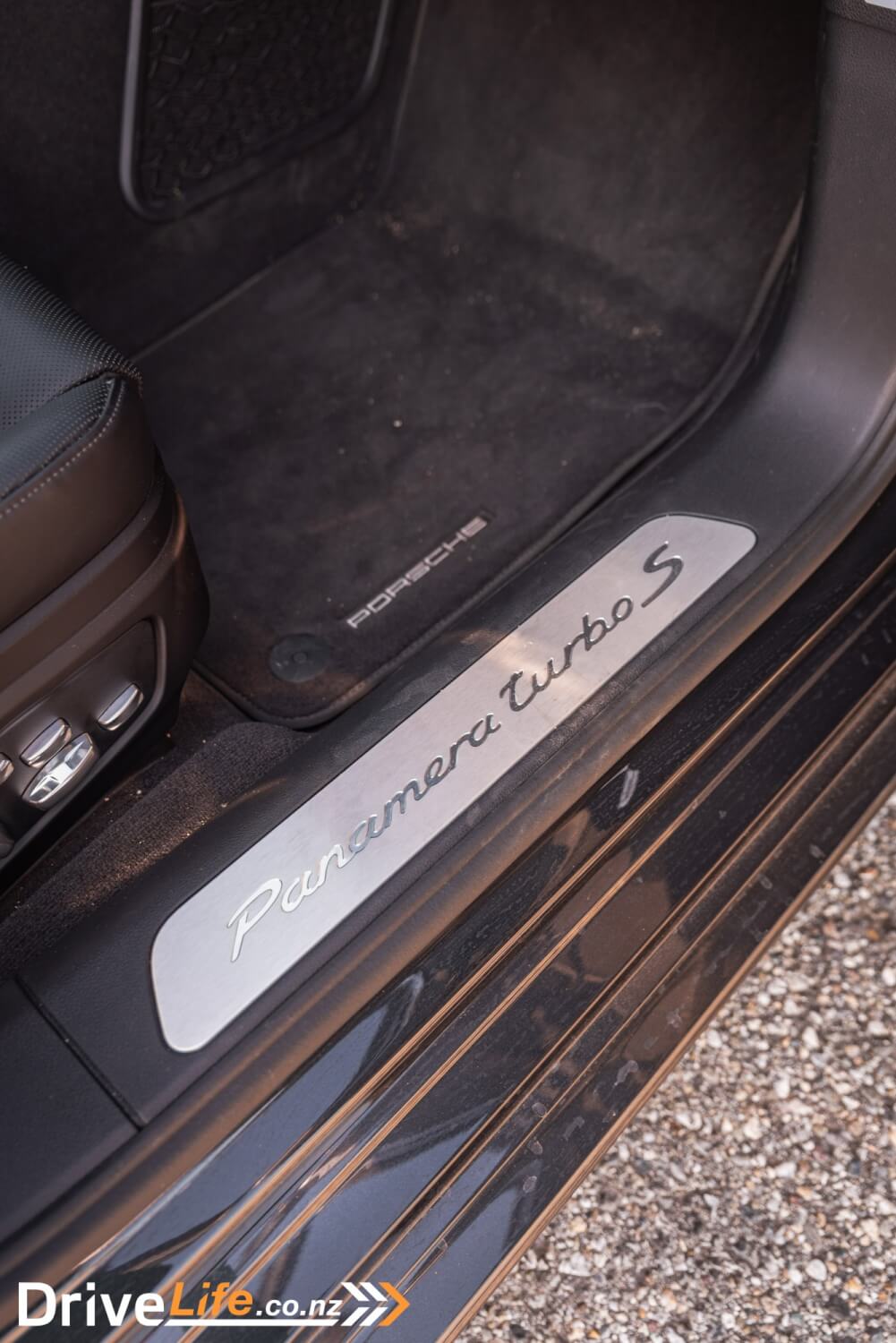
What Does The 2019 Porsche Panamera Sport Turismo Turbo S e-Hybrid Drive Like?
As much as I love single purpose cars, I’m also a sucker for a car that can do it all. A car that’s comfortable enough to use daily without needing to be on a first-name basis with a chiropractor yet exciting enough that I can take it on a twisty bit of road without fear of falling asleep. The Panamera covers all those bases, and some.
The Panamera has dual characteristics; it’s two completely different cars depending if you have it in ‘Normal’ or ‘Sport’ mode. In ‘Normal’ it’s a big, comfy, luxurious grand tourer that’s refined at cruise and is perfectly docile. Then, at the touch of a button it transforms into loud brash sporty thing. In Sport, and especially in Sport+, it makes childish pops and crackles on both upshifts and downshifts.
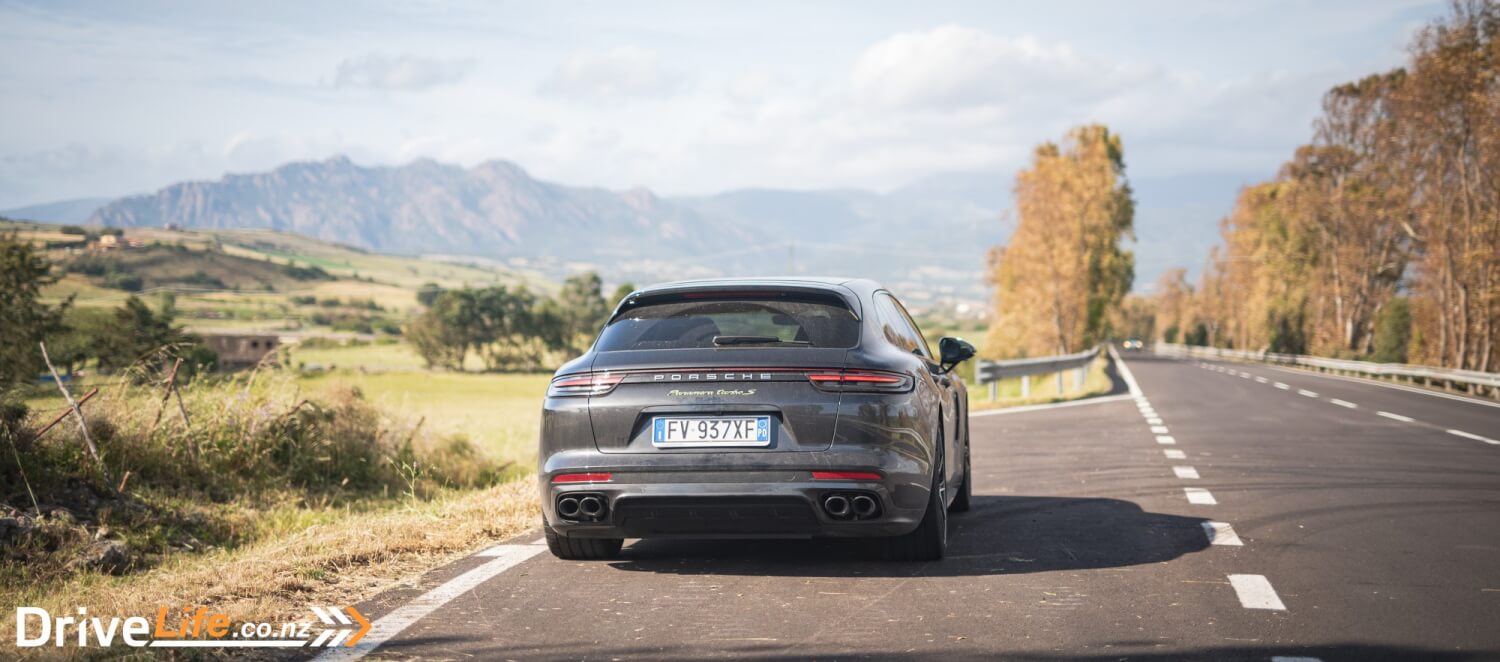
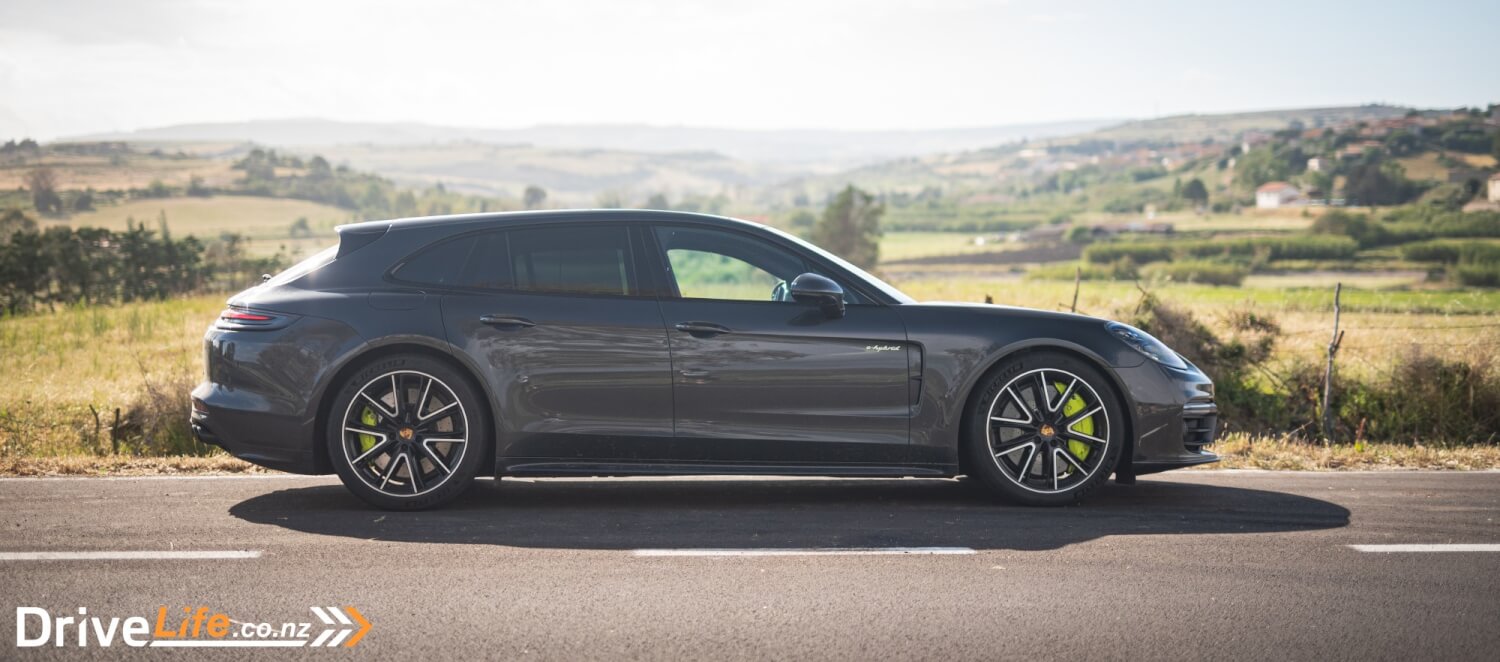
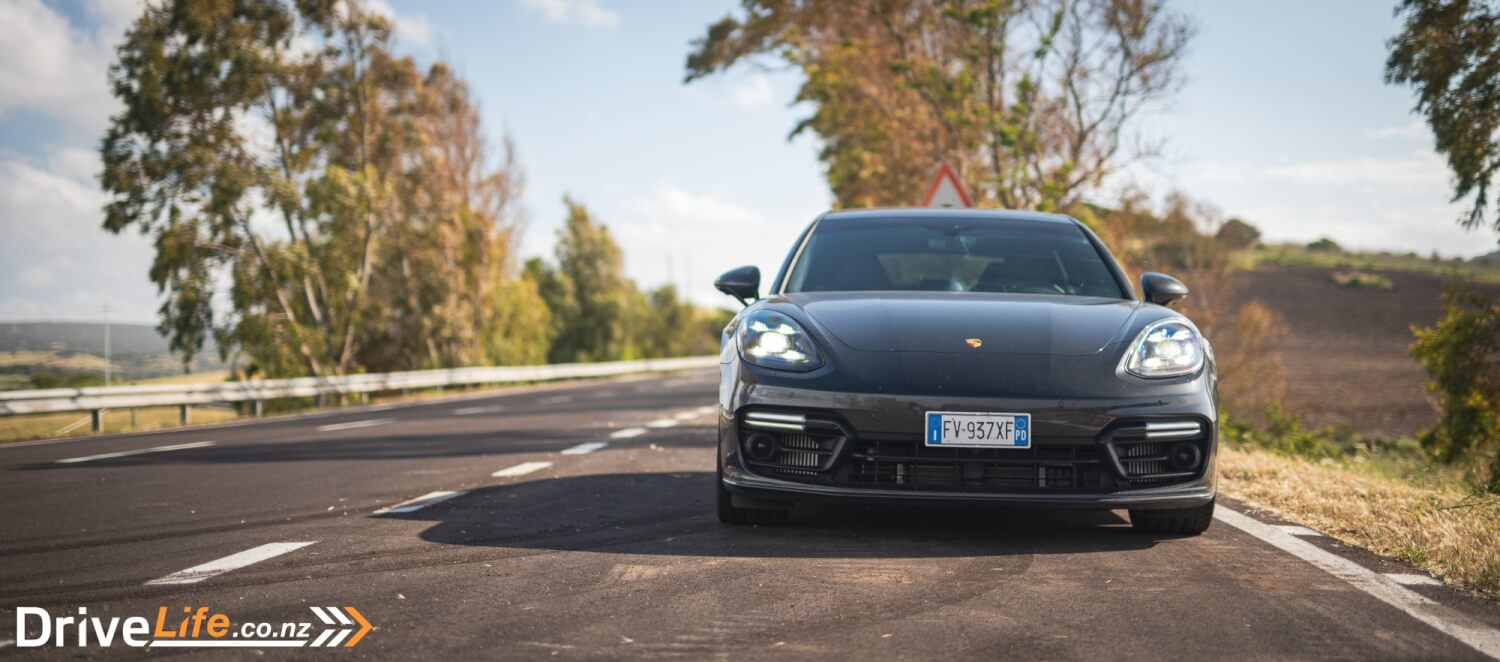
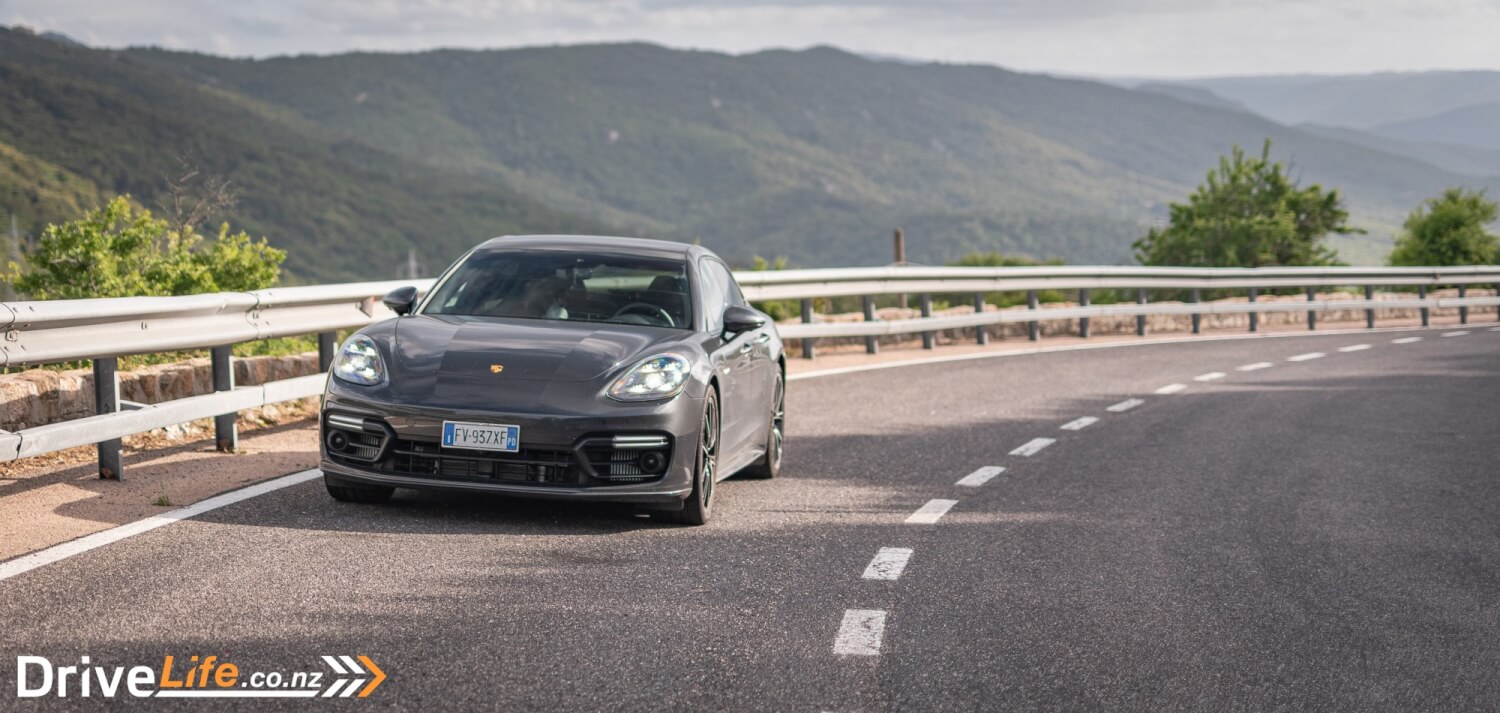
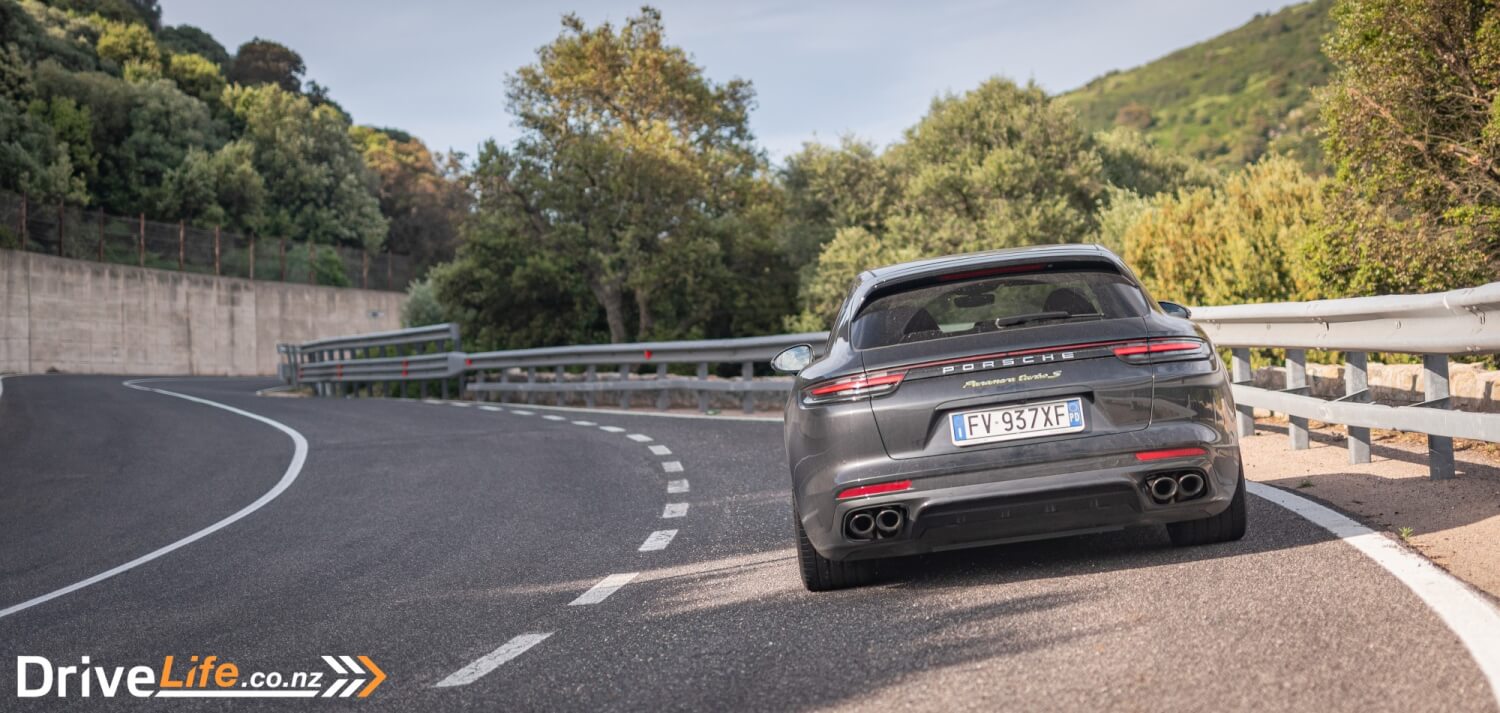
Then there’s the power and speed. Even in ‘Normal’ it’s a quick car, there’s never a moment in the Panamera where you’d ever think this was a slow car. The ferocity of the power just comes in different levels. In Sport+ it’s pretty much instantaneous to the point where the accelerator pedal is almost like activating a slingshot. I’ve only felt acceleration this quick in mid-engine turbocharged supercars, which is to be expected. But in a four-door wagon weighing over two tonnes it’s completely and utterly mind-boggling. Porsche’s brilliant PDK dual-clutch transmission is the best in the business, it offers super quick shifts without jolting you or the car.
The combination of that brutal twin-turbocharged V8 with the electric motors filling in the boost is nothing short of astonishing. It takes you by surprise, the power is almost always instant and while it might say e-Hybrid, this thing sounds anything but eco-friendly when you introduce the right pedal to the carpet.
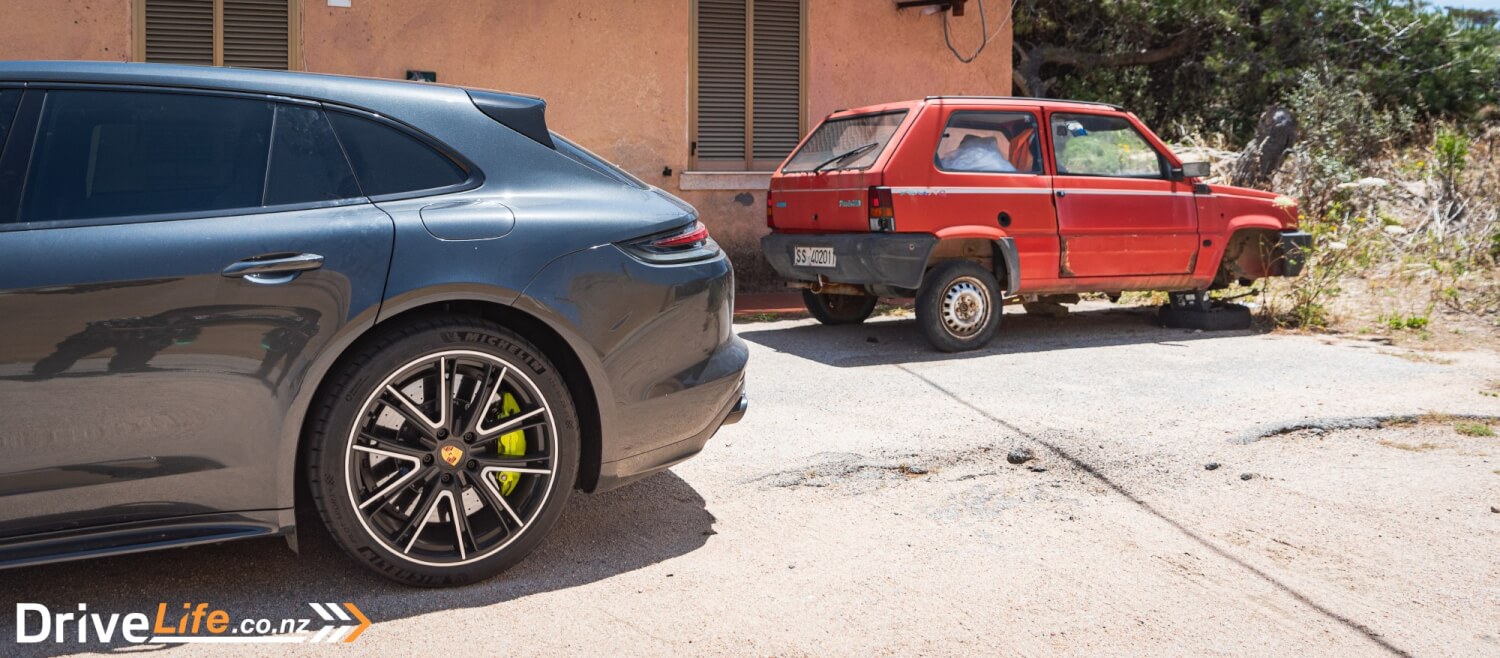
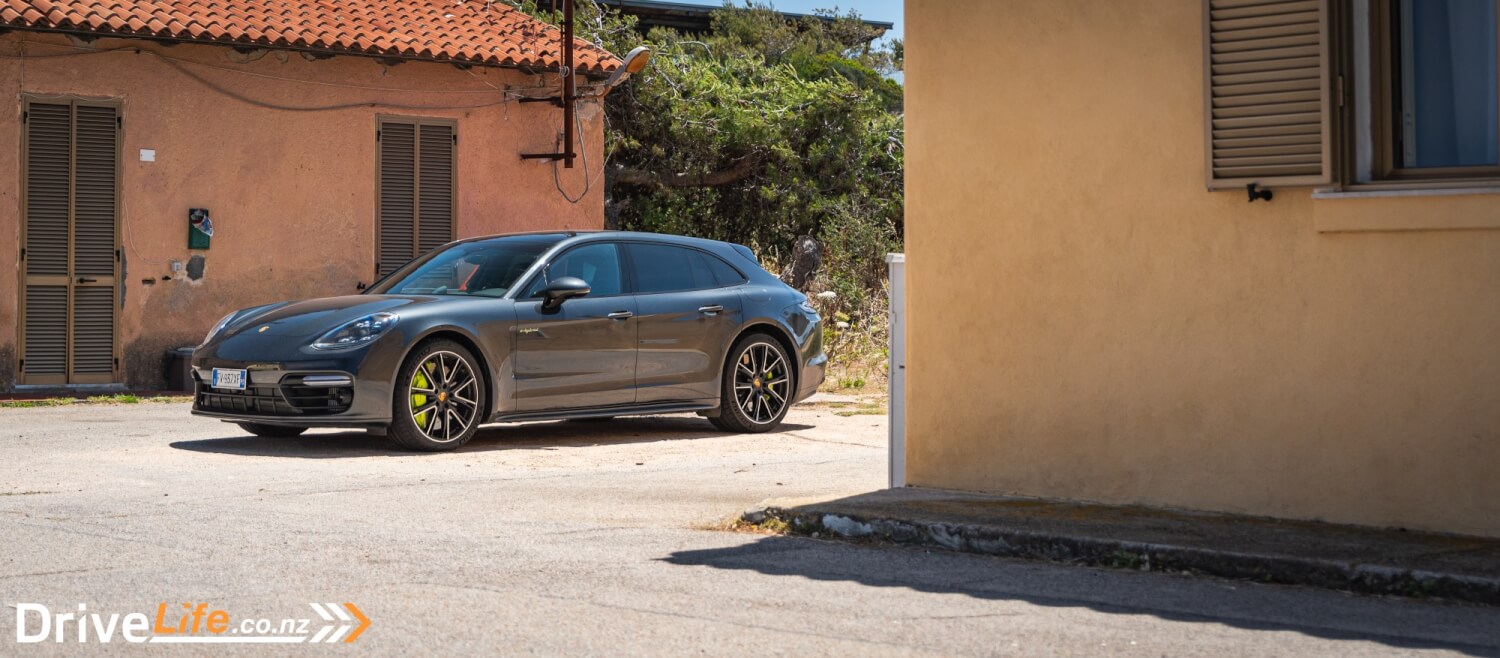
If you keep mashing the right pedal the speedo will keep climbing and you have to think to yourself, will it ever stop? Of course it will stop at just shy of 320 km/h. It’s almost dangerous how it can make triple-digit speeds feel like double digits. At speed it’s incredibly stable and takes away all sense of speed, this is a true autobahn monster. It doesn’t matter how fast you go, the car feels completely stuck to the ground. Whether that’s the mass keeping it down or the clever AWD system or the fantastic Michelin Pilot Sport 4 tyres, it’s truly impressive. It just gives you so much confidence to keep pushing the car.
The ride was surprisingly supple too. I was expecting this car, especially in its lowest ride setting, to be harsh like the E63. However, there was never a point I thought it’d break my spine, even on some of Italy’s sketchy roads. The body control was sublime too. Porsche have done the best job they could to make it feel smaller to drive than it looks. Once you start getting it on some twisty roads you momentarily forget this is a near 5-metre long wagon.
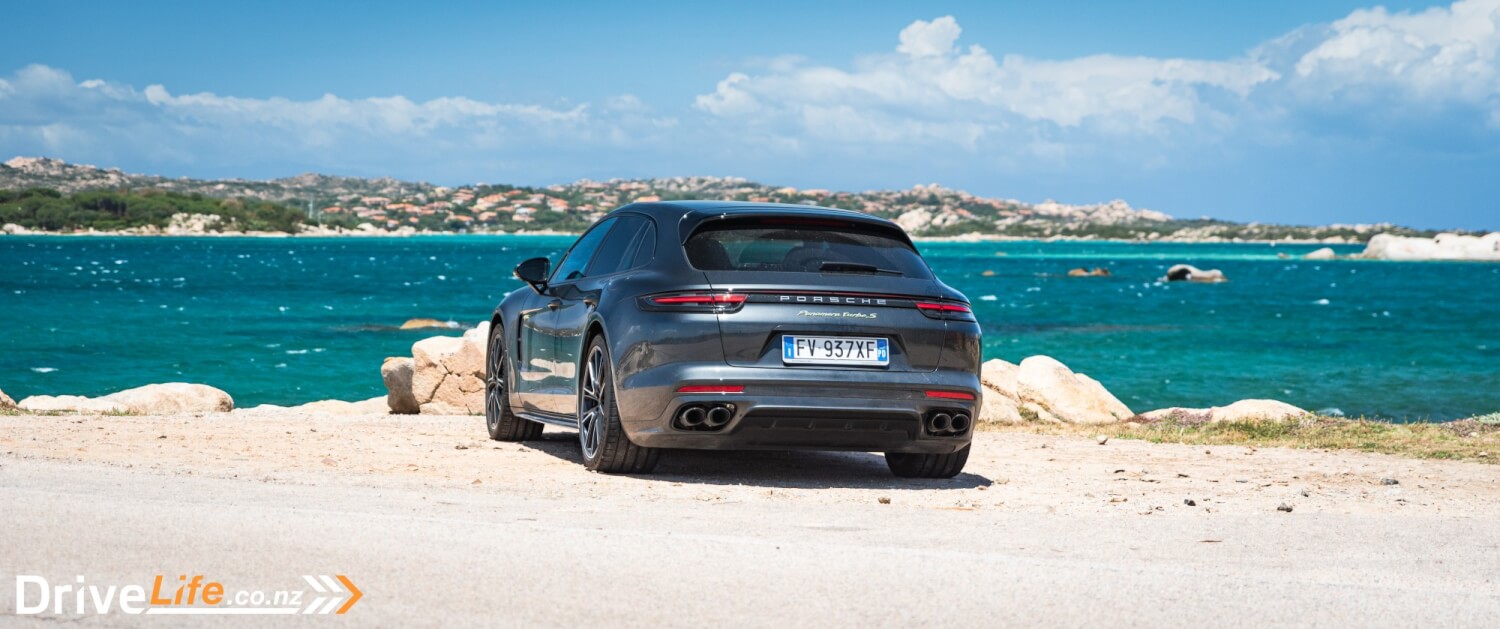
Sure, it’s not razor sharp as you’d expect from a Porsche sports car, it never was going to be with this much mass, but still very much feels like how you’d expect a Porsche wagon would drive like. The handling of the Panamera is more capable and reassuring than it is ‘fun’. It’s not something you’d look forward to taking for a mountain blast but if said mountain is several hundred kilometres away you’ll have a great journey there in this.
If you haven’t noticed by now, this is a big heavy car and drinks fuel accordingly when batteries are not charged. There are three different e-modes; Charge, Hold, Auto. Charge uses the petrol engine to replenish charge for the batteries, Hold keeps what remains in the batteries at bay when you’re ready to use them, and in Auto the car decides when to charge and when to hold. That said, if you’re hammering along in any of the sporty modes then the batteries will charge automatically. A quick blast up and down a mountain road was enough to fully charge the batteries back up again. Still, it’s a mighty impressive car and while I didn’t get close to the claimed 3L/100km fuel economy the 7L/100km I managed to average over the 2000km I drove it was still pretty impressive for a near two-tonne 500kW super-wagon.
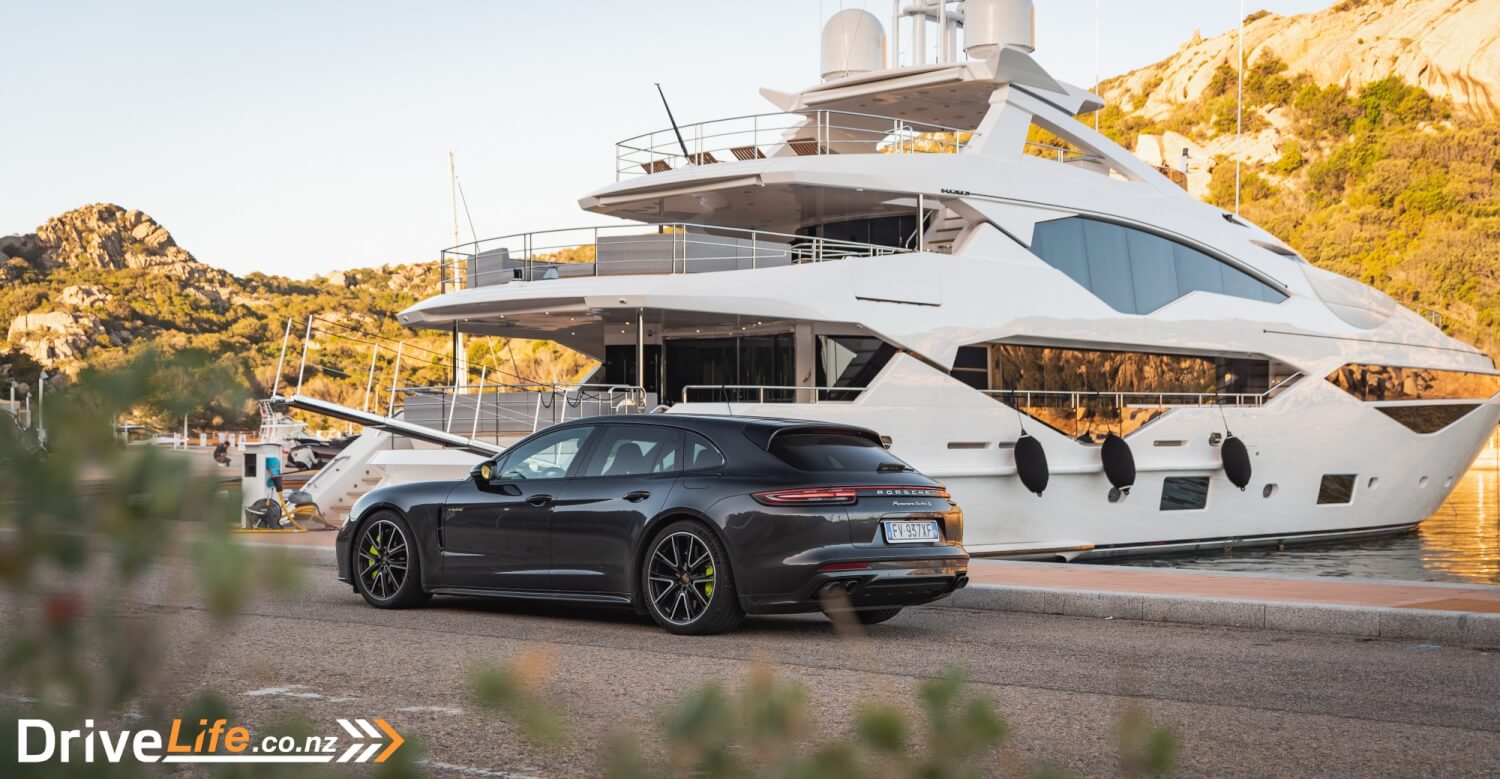
What’s The Competition For The 2019 Porsche Panamera Sport Turismo Turbo S e-Hybrid?
| Brand/Model | Engine | Power/Torque | Fuel, L/100km | 0-100 kph, seconds | Price |
| Ferrari GTC4LussoT | 3.9-litre V8 twin-turbo, petrol | 449kW/760NM | 10.7 | 3.5 | $473,000 |
| Porsche Panamera Sport Turismo Turbo S e-Hybrid | 4.0-litre V8 twin-turbo petrol + electric | 500kW/850NM | 3.0 | 3.4 | $435,500 |
| Mercedes-AMG E63 S | 3.8-litre flat six twin-turbo petrol | 450kW/850NM | 10.8 | 3.4 | $231,600 |
What’s The Pros and Cons For The 2019 Porsche Panamera Sport Turismo Turbo S e-Hybrid?
| Pros | Cons |
| • Blisteringly quick • Solid fit and finish of materials • Infotainment crisp and intuitive • Handles well for such a big heavy car • A perfect all-round cruiser • Cool styling • Technical tour-de-force | • Not as spacious as you’d expect for a wagon • Fussy central vent. • Eye-watering starting price. |
What Do We Think Of The 2019 Porsche Panamera Sport Turismo Turbo S e-Hybrid?
One of the best all-rounders out there. But with the likes of the RS6 coming in to town soon, the soon-to-arrive refresh will need to give the Panamera more ammo to come out guns blazing if it wants to remain the top dog in the fast family wagon world.
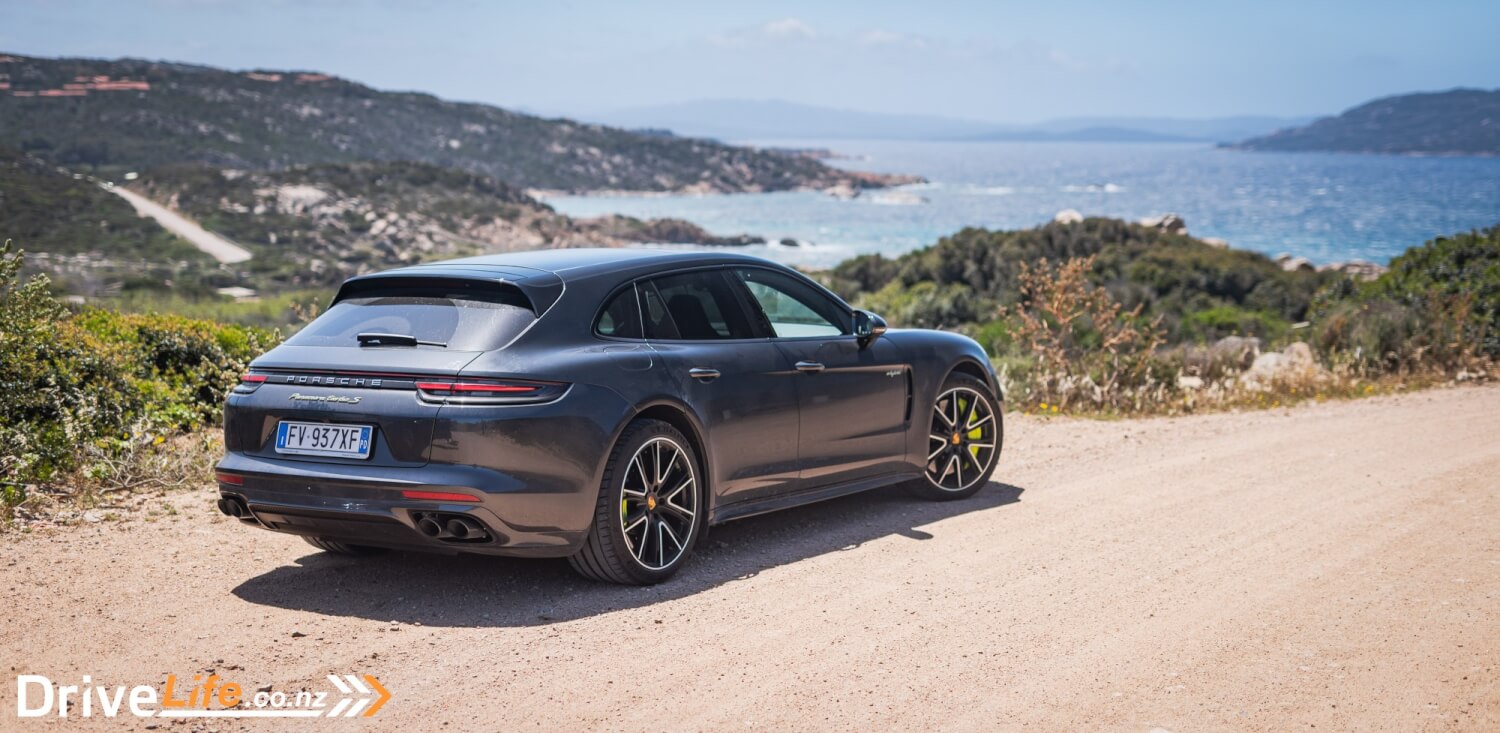
For now though, the Panamera Sport Turismo, especially in its top Turbo S e-Hybrid trim, is one of the most impressive and desirable all-rounders on the market right now. It’s a true jack-of-all trades that’ll comfortably take you and your friends cross country, do the school run in pure electric mode, and give the most exotic of supercars a run for their money.
Its price is eye-watering, sure, but my god it’s an incredible bit of kit. It’s completely unnecessary but that’s what makes it so damn baller.

2019 Porsche Panamera Sport Turismo Turbo S e-Hybrid – Specifications
| Vehicle Type | Station Wagon |
| Starting Price | $435,500 |
| Tested Price | $450,000+ (est) |
| Engine | 4.0-litre V8 twin-turbo petrol engine plus electric motor hybrid |
| Transmission | 8-speed auto PDK with manual mode |
| 0 – 100 kph, seconds | 3.4 |
| Spare Wheel | None |
| Kerb Weight, Kg | 2,325 |
| Length x Width x Height, mm | 5040 x 1937 x 1432 mm |
| Cargo Capacity, litres | 425 |
| Fuel Tank, litres | 80 |
| Fuel Efficiency | Advertised Spec – Combined – 3.0L / 100km Real World Test – Combined – 7.0L / 100km Low Usage: 0-6 / Medium Usage 6-12 / High Usage 12+ |
| Turning circle | 11.9m Small: 6-10m / Medium 10-12m / Large 12m+ |
| ANCAP Safety Ratings | N/A |
| Warranty | 3 year, 100,000 km |












































